How to attract screech owls to your woodland wildlife gardens
Screech owls are popular visitors to suburban woodland gardens and are beginning to increase their numbers in Canada, in part, because more homeowners are installing nesting boxes on their properties. Screech owls are among the smallest in North America but they eat more than their share of mice and rats making them a favourite for woodland gardeners.
What do screech-owls sound like? Where do they live?
I know they’re here. I’ve heard them. Many times.
And now, a few years later, I’ve finally seen one in the garden. I suspect they’ve been around all this time but they are not all that easy to see. Sundown and sunset are the most likely times to see them, but even then their natural camouflage makes them almost impossible to spot.
Plenty of nights when I take our dog Holly out before bedtime, we’ve heard them calling out – screeching, if you will. It’s a little eerie at times when you are not expecting it, but it’s music to my ears now that I can identify the call. (Link to screech owl vocalizing.)
It’s not exactly a screech, more a whinny like a horse and trilling, but it could be mistaken for a Screech if you’re alone in the middle of the night in a forest.
Eastern Screech owls are not large.
Many people even mistake the robin-sized nocturnal woodland owl with short ear-tufts and yellow eyes, for fledgling Great Horned owls when they notice them in their neighbourhood. Not that they are easy to notice in the first place. Not only do they blend into the forest, their nocturnal habits make them a rare sighting if you are not making a conscious effort to find them.
These small owls, however, can be more common in your neighbourhood than most may realize.
Where do screech owls live?
The Eastern Screech Owl, a common species found east of the Rockies, can be spotted in a variety of habitats including woods, suburbs, and parks. These adaptable birds are not picky when it comes to their living arrangements and can even be found nesting in larger backyard nest boxes.
Their ability to blend seamlessly into their surroundings makes them difficult to spot during the day, so it’s best to listen for their distinctive calls at night.
Geographically, the Eastern Screech Owl’s range extends from the Rocky Mountains to the Atlantic coast, covering a vast area from southern Canada down to Florida and southern Texas.
In fact, these adorable little nightbirds are quite common throughout Eastern United States as far south as Florida, including parts of southern and central Ontario into Manitoba and Saskatchewan.
One of our screech owl boxes installed on a mature pine just waiting for its first homeowners.
Although these little guys are still widespread and fairly common, they are gradually declining in parts of their range. If there is good news in climate change, it is that the Screech owl is slowly expanding its range farther into Ontario, Manitoba and Saskatchewan and even into Alberta.
In Canada, this species is a year-round resident, with the majority of the population concentrated in southern Ontario.
Whether it’s in the dense woods, the quiet suburbs, or the bustling parks, the Eastern Screech-Owl has managed to adapt and thrive in a wide range of environments. So keep your eyes peeled and your ears tuned in as you never know when you might catch a glimpse or hear the haunting call of these elusive birds.
The North American Breeding Bird Survey estimated that between 1966 and 2015, the number of Screech owls increased in Canada, but declined in the United States. But of the estimated 900,000 global breeding population, 95 per cent live in the U.S., 4 per cent in Mexico and a mere 1 per cent in Canada.
Cool facts about Screech Owls
Screech Owls are the smallest owls in North America
In some parts of the U.S. including Texas, Screech owls use small blind snakes to keep their nests free of insects while they are raising their young. A study showed that owls that brought these small snakes (more like a worm than a snake) into the nesting area had fewer insects like ants, termites or larvae. Researchers found that the snakes proved beneficial to the young owls who were found to have fewer health problems and a better chance of survival. (Click here if you want more information about the collaboration between the owls and snakes.)
The tips of flight feathers of the Screech Owl are serrated and, as a result, their flight is almost silent and allows them to swoop down on unsuspecting prey.
Screech owls have such an acute sense of hearing they can find small mammals such as mice under very heavy snow or vegetation. This makes them successful hunters in all seasons.
Their large eyes give them excellent eye sight at night, but because of the position in the front of their heads they are able to move their heads 270 degrees in either direction. This gives them the ability to see in an almost complete 360 degrees.
During the day, Screech owls conceal themselves in trees, their plumage camouflaging them against the bark. If they feel extremely threatened, they will make themselves appear very thin, squint their eyes and sway back and forth to imitate the natural movements of a branch in the wind.
Owls represent wisdom in early Indian folklore
These owls were considered protectors in ancient Greece mythology and accompanied Greek armies to war.
If you are looking for Screech Owls, natural woodlands with an open understory are an excellent place to start, and a woodland garden rich in native plants and trees can be the perfect spot for a couple of screech owls to call home.
The abundance of native plants and trees will help attract insects which form a large part of the Screech owls’ prey made up of small mammals, birds and reptiles.
You’ll also find Screech owls in the small woodlots around farms where the hunting is good for field mice – one of their favourite prey.
They generally favour deciduous or mixed woods with plenty of open ground for hunting. Wooded areas along streams and rivers also provide prime habitats for these owls. Suburban yards and city parks can be ideal places for them to take up residence provided there are large trees and nesting cavities.
Unfortunately, homeowners remove many of the owls’ natural nesting holes when they remove dead snags from their yards. Thankfully, nesting boxes have taken over where natural nesting holes have been removed.
Nesting boxes are said to be part of their success story and expansion of the owls’ range.
I recently picked up two large home-made boxes (see photo above) which have been installed about 15 feet up in two trees in our woodland garden. One of the boxes found a home in our mature Austrian Pine.
Owl boxes, although on the large side compared to traditional blue bird boxes, are available at some specialized wild bird stores as well as through Amazon. JCs wildlife screech owl box is even featured in this you tube video and comes highly recommended.
It’s never too early to get your boxes out to give the owls an opportunity to discover them.
Screech owls are secondary inhabitants of nesting sites so they are always on the lookout for a new home.
They can often be found nesting in former woodpecker or squirrel tree cavities. Breeding season for Eastern Screech Owls is generally around mid April, but it can range from mid March through to mid May.
The elaborate courtship ritual begins with the male enticing the female by calling from a variety of branches until they are close. This is followed by what can only be described as a scene out of a 1980s disco hall with the male bobbing and swivelling his head and entire body as he slowly winks at the female. If the female ignores him he takes his dance moves to an even higher level, if she accepts, they touch bills and begin preening each other. Pairs pretty much mate for life.
If you look closely at the large owl house, you’ll see our little screech owl peering out in the the early morning. This was taken on May 14. I had heard the owl in the evenings leading up to her appearing in the box, but had not seen her in the box until the middle of May. Hoping for some babies this year.
When do Screech owls nest
The nestling period is between 26-30 days and incubation can be between 27-34 days. The hatchlings are born with eyes closed and covered in white down.
When on the nest, the female remains in the nest except for brief excursions at dawn and dusk.
The male provides the female and nestlings with all the food, while the female rips and tears it into small bits for the babies.
Both parents provide food for young owls, who leave the nest about 4 weeks after hatching.
Their diets vary from small animals, including birds and mammals as well as earthworms, insects, and pond inhabitants like tadpoles, frogs and lizards where available. Rats, mice and squirrels, moles and even rabbits are on their lists as well a birds including birds as large as jays, grouse doves and woodpeckers. They’ve even been known to cache extra food in tree holes, when prey is plentiful in the area.
Adults tend to remain near their breeding areas year-round, where the males defend small territories around nest sites. Breeding territories range from 4 to 6 hectares (10-15 acres in wooded suburban areas. Territories are much larger (200 acres) in open rural areas.
Captive Screech owls can live up to 20 years, while wild birds live much shorter lives. Predators include larger owls such as the Great Horned Owl, minks, weasels, raccoons, skunks, snakes, crows and Blue Jays.
Where to install your owl nest box
The nesting boxes need to be installed in large mature trees between 6-30 feet high. They should be mounted in an area that affords a clear flight path in and out of the box as well as nearby branches where the fledglings can make their way to after immediately leaving the nest. Mounting the box in a southerly direction is ideal but an easterly or western exposure has also proven successful. A northern exposure is not advised.
It helps to have an uncluttered understory for the owls to successfully hunt.
Author Profile: Vic MacBournie is a former journalist and author/owner of the award-winning website Ferns & Feathers. He writes about his woodland wildlife garden that he has created over the past 25 years and enjoys sharing his garden photography with readers.
Native Goldenrod: Fall’s golden gift to wildlife gardeners and photographers
Goldenrod blooming in our gardens and along roadsides is a sure sign that fall is not far off. These are important native plants for a host of bees and butterflies that depend on the plants for late summer, early fall food sources.
Goldenrod might be the best addition to your fall garden
It might be common in your area along highways and open fields, but don’t underestimate the benefits of goldenrod in your garden.
This structural plant is not for the weak of heart. Mine stands more than six feet high, stretching up to the sky and, like a neon sign along a deserted highway, announces to every monarch, swallowtail, bee and butterfly in the area to come on over for some good eats. And they are happy to oblige.
In fact, the National Wildlife Federation, pointing to the work of author and biologist Doug Tallamy states: “Tallamy’s studies show that goldenrods provide food and shelter for 115 butterfly and moth species in the U.S. Mid-Atlantic alone. More than 11 native bee species feed specifically on the plants, and in fall, monarch butterflies depend on them for nectar to fuel their long migrations. Even in winter, songbirds find nourishment from goldenrod seed heads long after the blossoms have faded.”
If you are looking for more information on growing native flowers, you might be interested in going to my comprehensive article: Why we should use native plants in our gardens.
Goldenrod growing along the edge of a field bringing its fall early fall colour to the landscape and garden.
Does Goldenrod cause hay fever?
Let’s get this straight right off the bat – goldenrod does not cause hay fever – that would be ragweed. Goldenrod’s pollen is too heavy to be blown in the wind, while ragweed pollen takes to the air at the mere hint of a slight breeze.
It’s also important to note that not all Goldenrod is aggressive in the garden. It’s also probably a good time to note that Goldenrod is available in many forms – all beneficial to local pollinators.
We’ll get into all the different types and which ones might be good for your garden later, for now let’s just admire this native plant for what it is – a pretty, yellow magnet for bees, butterflies and other insects.
I just let it grow in my front and back gardens, not really worrying too much about its aggressive tendencies. But that’s just me.
Flower photographers love Goldenrod in the garden
I find it perfect for photography because, not only do the yellow masses of flowers form a great backdrop for the butterflies, the plants are so tall that I really don’t even have to bend over to get shots of the butterflies, insects and birds. Now, that’s a real bonus.
For more on photographing flowers in your garden, please check out my comprehensive post on Photographing flowers in your garden.
A native bumblebee works the goldenrod in our backyard as it comes into bloom.
Let’s take a closer look at this fall performer.
Goldenrod is actually a common name for a number of plants in the sunflower family within the genus Solidago. In fact, there are around 120 species of goldenrods native to the Americas, northern Africa, Europe and Asia.
In North America, about eight of these species are used as garden plants where they happily set roots in full sun to partial sunny areas in almost any average to below-average, well-drained soil. These herbaceous perennials, that are pretty much pest free, can grow from about 1.5-6 feet tall with a spread of 1-3 feet.
In very fertile soil, you may have to stake them to stop them from falling over when their heavily flowering tops get too heavy to stand on their own.
Although there are a number of hybrids that have a more compact size or flower more heavily, don’t bother with them. Stick to the native varieties and you will likely have fewer problems, help native wildlife more and sleep easier at night knowing you’re not introducing some weird, aggressive new plant to our already compromised natural environment struggling to fend off all the cultivars we have introduced over the years.
Goldenrod fills many roadsides in late summer and fall creating a tapestry of subtle fall colours.
Some native varieties to consider include:
Blue-stemmed goldenrod (Solidago caesia) is one of the more rare Goldenrod species and sports the common latesummer and fall bright yellow flowers. The plant gets its name from its arching purplish stems. This particular Goldenrod is noted because it not an aggressive spreader and produces good cut flowers. Plant it along with Smooth Blue Aster and New England Aster for some spectacular fall colour and pollinator action. Blue Stemmed Goldenrod is hardy from zone 4 through 7.
Autumn Goldenrod (Solidago sphecelata), is the native plant that horticulturalists like to use to make various cultivars from primarily because of its compact size. Autumn Goldenrod tends to stay to within a foot or two with its arching stems and plumes of yellow flowers.
Showy Goldenrod (Solidago speciosa) lives up to its name with its dense clusters of small yellow flowers that grow in a pyramidal- or club-shaped column, sitting atop the 1-5-foot tall reddish stems. It is considered one of the showiest of Goldenrods.
Sweet Goldenrod (Solidago odora) This is a more compact native variety that reaches two- to four-feet. You’ll find it growing naturally in dry, sandy, open wooded areas thickets and ravines. It’s distinguishing feature is its anise-scented leaves and the fact that it is another goldenrod that is considered less aggressive in a garden environment. It is a clump-forming, easy to grow, low maintenance plant that reaches up to 4-feet high and attracts birds, bees butterflies and hummingbirds. It’s found growing naturally in meadows or open woodlands.
White Goldenrod (Solidago bicolor) you guessed it, rather than sporting the typical yellow flowers, this goldenrod likes to show off white blooms.
Wrinklelfeaf or Rough Goldenrod (Solidago rugosa) if you have a moist area in the garden, this three- to five-foot goldenrod is the one to use. It’s distinctive narrow, toothed, rough-surfaced leaves and rough, hairy stems earned the plant its name.
Even as cut flowers the Goldenrod looks great in the garden but be careful, they’ll still be attracting the bees.
It’s time for a little gold in the garden
Just about the time the Black-eyed Susans get into full swing, the Goldenrods come along and add even more gold to our landscapes. They ride that gold right into late fall and are still adding to the beauty of the garden when the snow falls and forms a little blanket atop the browning flower clusters.
Throughout fall, the goldenrod and asters form a perfect combination of warm golds and cool blues along our roads and in meadows creating incredibly textured landscapes throughout Ontario and into the north-eastern parts of the United States.
The activity these plants create among the remaining bees, butterflies, hummingbirds and other backyard wildlife is reason enough to grow our own patches of these lovely native plants. We let ours grow wild where the seeds land, but these plants can be tamed and grown in the back of gardens with great success.
If you don’t already have them in your woodland/meadow garden, put them on your list for next year.
You won’t be disappointed.
Pentax F* 300mm f4.5 ED IF: My favourite wildlife lens
Capturing memorable backyard wildlife and birds often depends on getting close. The Pentax F*300mmF4.5 has long been the lens I reach for to achieve my best results when it comes to wildlife photography.
A 300mm lens is the perfect wildlife lens
The Pentax F* 300mm f4.5 ED IF full frame lens is the only lens I reach for when it comes to serious bird or wildlife photography.
My best images time and time again are shot with this 35-year-old lens, with its exquisite glass, outstanding build quality, handsome looks and the most beautiful bokeh I have ever seen. What more can a person hope for?
I’ve shot with this lens for years, but it wasn’t until I began focusing on backyard wildlife that the lens came into its own capturing impressive digital images and proving to me once and for all that there is no reason to upgrade to a more modern lens.
Coyote in winter coat
This loan coyote was captured with the 300mm f4.5 in a woodlot near our home. It was photographed at ISO 3200 on my Pentax K5 at 1/2000 sec, at f6.3. The image was cropped and post processing applied via Lightroom.
It’s not perfect, but nothing is really.
It came into its own recently when, while out looking for snowy owls in the woodland and farmlands around our home.Although the light was failing and the owl was at some distance, the combination of the 300mm, a 1.4 converter and some judicial cropping allowed me to get close enough to capture useable images of the owl.
A cardinal takes a drink from the bird bath. The creamy background is almost as beautiful as the cardinal.
The Pentax 300mm F4.5* lens is neither the fastest at f4.5, nor is it the best auto focusing lens with its ancient screw-drive system, but when it comes to bokeh – that soft milky background we all strive for in our images – I think it’s pretty tough to beat this lens.
Be sure to check out my F* 300mmF4.5 photo gallery to see more images taken with this superb lens.
The Pentax F*300mm F4.5 ED IF is an exceptional, compact 300mm lens with beautiful bokeh that gives me 450mm on a cropped sensor.
A great lens is one that you can shoot wide open and still get sharp images. This compact, all-metal lens, with a heft that tells you it was built when quality of build was at least as important as image quality, is sharp wide open. Stop it down to F8 and it’s tack sharp with even better contrast and colours that will leave you almost speechless – grasping for descriptive words that do it justice. The cropped sensor on my K5 and ist-D cameras gives me the equivalent of a 450mm lens.
A Red Wing Blackbird calls out for a mate in spring.
Imagine a Pentax 300mm mounted on the miniature Pentax Q line of cameras. You can do that but you would end up with a 1500mm F4.5 lens.
For my comprehensive post on the Pentax Q cameras and lenses, check out the Pentax Q, why you need one in 2022.
Even in low light, the Pentax 300mm F4.5 is able to capture the moment, and with a cropped sensor it becomes the equivalent of a 450mm.
If this sounds a little too good to be true, then, by all means, don’t take my word for it.
“Great Image quality and small size really impressed me. Exceptional build quality. Similar image quality to the 77 limited. Love it! This lens alone would keep me with Pentax for ever.”
Consider these comments from the folks on Pentax Forums:
“I can’t add much to the glowing praise of this lens posted by almost every single reviewer on this forum. The 300mm f4.5 F* is sharp enough wide open, becoming razor sharp by f6.7 to f11. Color rendition is outstanding. Chromatic aberration is extremely well controlled. Autofocus performance is as good as any older screw drive lens …”
This white egret was captured in a nearby wetlands with the F* 300mmf4.5 lens.
And more from the Pentax Forums: “As for the quality of the glass, I feel humble and not up to showing it off to it’s full potential. The sharpness and resolution are to my eye amazing. The 300mm focal length gives plenty of reach and while only f4.5, with the low light abilities of modern cameras, I was able to take many shots in what I thought were very challenging low light conditions.”
“Great Image quality and small size really impressed me. Exceptional build quality. Similar image quality to the 77 limited. Love it! This lens alone would keep me with Pentax for ever.”
“This is the lens everyone should dream on.”
The red squirrel was photographed at the outdoor photo studio/reflection pond with the F* 300F4.5 lens.
In the world of Pentax, this lens has a cult following.
And why not?
Its compact size makes it easy to carry even on long hikes.
Its built-in tripod mount features a high mount that rotates to quickly allow for vertical images.
Its built-in lens hood can be left non-extended maintaining the lens’s compact size, or extended out to provide excellent coverage. An added bonus is the rubberized front that prevents damage both to the lens and the hood itself.
Its handsome looks, complete with the brand name stamped on its antique-white hood, announces that you are shooting with a premium product.
Its full-frame design means you are shooting with a 420mm on APS-C sensor cameras like the highly praised K5 (and my ancient *ist-d.
The gold emblem on the side of the lens screams classy, high-end lens.
The 67mm filter size is a common enough size that you either have in your collection of filters, or can find high-end B&W filters used on ebay or at your local camera store.
Manual focus is put into gear by a solid shift of the collar on the barrel of the lens. Shifting into manual focus is just the beginning of the satisfaction of using the lens in manual mode. Focusing is smooth with just enough resistance to make you think you are using a classic SMC manual focus M-series lens.
Add a 1.4 converter and not only is it still sharp, but it becomes a fast super telephoto lens in the 580mm range.
The bokeh of this lens takes centre stage in this image of a blue jay in our crabapple tree.
I could go on forever but what really matters is how this thing handles out in the field.
Similar modern 300mm lenses are available for Canon Amazon link ( Adorama link) Shop Canon direct; Sony Amazon Link (Adorama Link)(Keh Camera Used) (B&H Photo link); Nikon Amazon link (Adorama Link) (B&H Photo) and Fuji Amazon Link (Adorama link) and, of course, Pentax Amazon link (Adorama Link) so be sure to check them out.
A cottontail stops eating to have its picture taken.
How I like to use the F*300mm F4.5
I like to combine the 300mm focal length on a tripod attached to either my Pentax K5 or ist-d converting it into a 420mm F*4.5.
While this is often enough to capture many of the more friendly birds, chipmunks, red squirrels deer and fox that are regular visitors to the yard, adding a Tragopan photographic blind into the mix along with an outdoor, natural photo studio brings out the magic this lens has to offer.
Be sure to check out my full post on the Tragopan photographic blind.
The lens is exceptional but getting subjects in front of it is key to letting it shine.
The Tragopan blind, together with the home-made photo studio, is almost like bringing an endless line of beautiful models in front of your lens with the background of your choosing.
A red squirrel in winter at the outdoor photo studio where I included grass seed heads from native Northern Oat grass.
The blind gets me extremely close to the subjects. The reflection pond/photo studio puts the subjects in the perfect photographic environment, and one I can easily change for seasonal interest.
In the blind, I set the lens, which is on the heavy side at more than 1200 grams, on a tripod.
Add some well-hidden bird seeds behind a stone or lichen-covered tree branch and get ready for action.
The water itself is a great way to bring in birds and small mammals to a specific location. When I’m not inside the blind photographing the action at the photo studio, the reflection pond becomes a bird bath keeping the birds accustomed to the water feature.
Be sure to check out my post on building a DIY outdoor photographic blind.
A chipmunk appears to almost be praying as she looks into the lens. But look at that bokeh in the background.
The setup allows me to maximize the possibilities of the lens. Add an external flash, a polarizing filter; shoot wide open or stop it down to F8 or F16. Heck, I’ve even experimented with the camera’s built-in filters to create interesting effects.
I’ve also used the blind together with the F*300 F4.5 to capture images of our local fox. Although it is not particularly skittish, by using the blind and the 300mm, I’m able to capture the fox in a more intimate and natural environment.
If I’m out it the field or shooting birds in flight, I’ll often put the lens on a monopod to allow a little more flexibility.
Although I like to think of the lens as primarily a wildlife and birding lens, I will also pull it out to photograph flowers if I’m trying to create beautifully soft backgrounds. The lens has the ability to isolate flowers growing in a busy environment.
It also can be used for larger butterflies and other insects. Although its close-focusing abilities are good at 2 meters, with a maximum magnification at 0.17x, the addition of extension tubes can get you in close. The added magnification of the APS-C sensor enhances the ability to capture smaller insects and butterflies.
Skunk up close and personal with the F*300mm 4.5 lens.
Information below is from the Pentax Forums website
Image Format: Full-frame / 35mm film
Lens Mount: Pentax K
Aperture Ring: Yes (A setting)
Diaphragm: Automatic, 8 blades
Optics: 9 elements, 7 groups, (including 3 ED elements)
Mount Variant: KAF
Max. Aperture: F4.5 – Min. Aperture F32 Focusing
Auto Focus (screwdrive)Min. Focus: 200 cm Max. – Magnification 0.17x
Filter Size: 67 mm
Internal Focus: Yes
Field of View (Diag. / Horiz.) APS-C: 5.5 ° / 4.6 °
Full frame: 8.2 ° / 6.9 °Hood: Built-in, slide out
Weather Sealing: NoOther Features: Push-pull AF/MF Focusing Ring,
Tripod Mount Diam x Length
84 x 160 mm (3.3 x 6.3 in.)Weight
880 g (31 oz.) w/ Tripod Foot: +240gProduction Years: 1987 to 1991
Engraved Name: smc PENTAX-F* 1:4.5 300mm ED[IF]
Why do foxes scream?
Have you ever heard a terrifying scream at night in the garden or in a nearby woodlands? Chances are the bone-chilling sound was simply a red fox calling out for a mate. The piercing sound of a fox scream can shatter the peace of the woodland garden, but it is just one of the many vocalizations foxes make.
Terrifying screams ring out in Woodland garden
Have you have ever heard a fox screaming at night in the garden?
If you are unfamiliar with the sound, mark my word, it’s what horror movies are made of. Some describe it as a bone-chilling sound similar to a woman in distress. Others describe it as a child screaming in pain.
Despite the terrifying, high-pitched sound, it’s important to note that the scream is nothing more than a form of communication used by red foxes. The vocalization is one of a number foxes use. Rest assured they are likely not in distress, being attacked or fighting, although they could be warning another fox that they are in the area and to leave them alone.
The screams are often heard during breeding season in the spring. The scream is believed to be used by vixens (female foxes) to lure male foxes to them for mating, but males have also been known to let out screams occasionally as well.
Parent foxes with cubs may also use loud screams to warn off other foxes entering into their territory.
A beautiful young fox hunts for mice in the grass. Foxes have several vocalizations including a loud, piercing scream that can sound terrifying in the middle of the night in the woodland garden.
Foxes are territorial
Foxes can be very territorial and will aggressively defend an area from other foxes.
Their territory is very much dependent on the habitat but studies show that they have been known to hold territories as small as 0.2 square kilometres in urban areas where food is plentiful, to as high as 40 square kilometres in more natural areas. Each fox family group consists of a vixen (female) a dog (male) and their kits.
In areas where foxes are not hunted regularly, and there is plenty of food, a family group could consist of several adult offspring.
Because foxes are most active at night, you are likely to hear the screams late into the night, but as a video below shows, fox will scream during the day as well.
In my case, it was around midnight and, although the screams were clearly coming from the hedgerow in the back of the garden along a fence line, I never saw the culprit and had no idea what was causing the sound.
Check out my earlier article on the urban fox.
Fox screams are surprisingly loud
The sheer loudness of the scream made me think it was coming from a much larger animal than a fox, either a racoon or coyote.
I’ve heard a terrified rabbit, angry racoons in a battle and barking deer, but nothing is more terrifying than a single fox or, even worse, a couple of foxes running through the garden screaming at one another.
I experienced it recently while taking our dog out for her late-night bathroom break.
I was sure an animal of some kind was the victim of a predator.
There had to be at least two fox, maybe more, contributing to the raucous sound.
It wasn’t until recently that I was able to determine the exact cause of the sound. YouTube videos provided the answer. If you have know idea what a screaming fox sounds like, check out these videos.
Two fox kits sit outside their den waiting for mom to return. Foxes can be are very territorial, especially when they have kits to protect.
Here is what a fox scream sounds like
I was not fortunate enough to record the fox scream in the garden but I’ve included some links here that provides both an audio and visual (see second video) example of fox screams.
Here is a YouTube video of a couple running through a forest around 1 am. The author suggests that it may have been parents distressed after a coyote or owl made off with one of their kits. It’s possible, but it may also be that the adults were communicating either between themselves or with their kits.
Here is a fun video of a fox seemingly wanting to play with a friendly dog in the middle of the day and letting the dog know it was not impressed when it ignored the fox. The video is particularly good because you can see the interaction and see the fox actually scream.
More Ferns & Feathers article’s on foxes
Wildlife Rescue: The Year of the Fox
Wildlife Rescue: Volunteers key to Wildlife Rehab success
The Fox Den and how to find it in your garden
Why foxes steal from our gardens: Fox got my croc
The urban fox: Easy Rodent control on four legs
What other vocalizations do foxes make?
Foxes, not unlike our dogs, coyotes and wolves, use numerous vocalizations to communicate with other foxes and kits. Their vocalizations are not as varied as our family pets.
The most common vocalization from a red fox are a quick series of high-pitched, almost yippy barks. Studies have shown that the bark sequence can be used as an identification system by other foxes.
The bark and scream are quite loud so are the most often heard sounds from a fox, but their are a host of quieter vocalizations used when foxes are in close proximity.
Gekkering is a guttural chattering with occasional yelps and howls that is often used by adult foxes during aggressive encounters as well as amongst kits playing around the den.
Parents will also use a sharp bark as an alarm call to alert youngsters of potential danger.
Submissive foxes will, not unlike wolves and coyotes, often emit piercing whines that often become loud shrieks as they approach more dominant animals.
Why foxes scream: A conclusion
If you are out at night in your woodland garden or hear a load scream through an open window, chances are good it’s a fox communicating with a partner or warning another fox that it’s intruding on their territory.
Having fox in your garden is a positive sign that your property is working as a natural resource for a host of animals including predators that help to keep rodents under control.
Rejoice, in their presence and embrace the many benefits they bring to our properties. They are fascinating animals that mean no harm to our family including our pets.
There are many examples of foxes hanging out with cats and dogs and growing so accustomed to people in the garden that they will tolerate a close approach as they explore the garden.
Remember, though, that these are wild animals and not pets.
Don’t be surprised if they decide your garden is as much their garden as it is yours. And don’t be surprised, if shoes, garden gloves and other potential “toys” go missing.
Check out my earlier story about why foxes steal from our gardens.
Living with and attracting friendly little red squirrels
The American Red squirrel is a year-round resident in our woodland garden. An entertaining little tree squirrel that prefers coniferous forests, especially pine trees which are both a source of food and habitat. American red squirrels, unlike their Eurasian red squirrel are territorial and hold their own against the American grey squirrels and fox squirrels.
Red squirrels, oak trees and acorns in our woodland garden
One look at the little red squirrel and I couldn’t help falling in love.
She could not have been very old and yet was brave enough to hang out under the feeder with the big boys: Big bruising American grey squirrels (some jet black and three times larger than her), mature red squirrels, and a host of very aggressive little chipmunks.
But she held her own, keeping a safe distance from the others while she scrounged what sunflower seeds and other tidbits she could find under the bird feeders.
I’m sure mom wasn’t far away keeping an eye out for her babies. During March and April, females have litters of between three to seven babies.
If you are looking to attract the American Red Squirrel to your woodland garden, be sure to include their favourite food sources, Oaks for their prized acorns, pine trees for their seeds, native berries and flowers for their seeds (Black Eyed Susans and Purple Coneflowers are good choices). These tree squirrel also appreciate a good sized woodpile where they can hide their stash for the winter.
Technically, this little red squirrel was actually what we call an American Red Squirrel, not to be mistaken by the even cuter and much more timid Eurasian Red Squirrel.
A digital digital painting of one of our cute little red squirrels.
The British counterpart (Eurasian Red Squirrel), complete with its adorable tufted ears, is actually becoming a threatened species in most parts of Europe because of its more timid, non-territorial stand against the introduced American Grey squirrel, which are all too familiar in backyards across the United States and Canada. The Grey squirrels were introduced to Great Britain in the 1800s resulting in the slow decline of the red squirrels. It is estimated that at one time red squirrels numbered in the 3 million. That number is now at about 120,000.
Dani Conner’s baby red squirrels video
For more on the Eurasion Red squirrel, be sure to check out Dani Connor and her entertaining You Tube channel about the Eurasian Red Squirrel. Dani is a talented wildlife photographer and Zoologist originally from London, UK who is now living in Sweden.
Recently she became mom to four orphaned baby red squirrels and has spent a lot of time with them gaining their trust. The kits allowed her to photograph them and record the sound they make when they eat, which went viral on Twitter gaining 14.8 million views.
Her YouTube videos are well worth watching and she has a Patreon site you may want to investigate.
American Red Squirrel at reflection pond.
If you are lucky enough to have American red squirrels in your backyard, you’ll know why the grey squirrels won’t be forcing them out any time soon. When it comes to who gets fed first around our feeders, the red squirrels make it clear up front that they’re not about to back down to the much larger greys.
Besides their willingness to communicate (the American red squirrel can often be heard communicating with a lengthy, descending trill and a persistent chatter of assorted notes and chucks), they are not afraid to show their annoyance with competitors around a food source.
In our yard their vocalizations are also one of the early warning signs that an intruder is about – especially one of the neighbourhood foxes. The Red Squirrels carry on for quite some time warning others of the dangers – including a hawk or own if they see it first.
I’ve seen one red squirrel chase a much larger grey squirrel from one end of the yard to the other when the grey squirrel intruded on its dinner party. I think it’s as much a game as it is a show of strength because they all more or less get along under the feeder. The real aggression is more likely between two reds than a red and a grey.
It can be great fun watching these little guys from inside the photographic blind. I’m sure they know I’m there, but they eventually become oblivious to me and the blind. In fact, I’ve had them jump on the blind while I’m inside mistaking the camouflage for a real tree or bush.
An immature American Red Squirrel looking for scraps of food under the bird feeder, always on the watch for predators and other feisty fellow. How can you not fall in love with this little fella?
On another occasion one Red squirrel chased another right through the blind when I was sitting in it. In one side and out the other before I even knew I had a couple of visitors.
Red squirrels can be feisty and territorial toward intruders, especially when food is involved. A showdown between two red squirrels is sure to involve plenty of tail flicking, chattering and even foot stomping. Trust me, it may look like they are having fun, but the argument can get pretty heated at times.
That tail of theirs can measure about half the size of the squirrel and when they are not using it to assert their dominance, its primarily used for balance as the squirrel moves from tree to tree in the woodland garden.
A lovely little Red Squirrel poses on a branch as it enjoys a snack.
Are red squirrels friendly?
I’ll never forget the time I was feeding one of our red squirrels peanuts and photographing her in our front garden, when she got around behind me and jumped up on my shoulder. Now that was an experience I’ll not forget.
She didn’t stay long and after a quick sniff she jumped down onto a rock to continue scoring peanuts from me.
Although they are territorial around other red squirrels, these little fellas are quite friendly and can be trained to take peanuts right out of your hand.
Unlike our chipmunks, I tend to just toss them their treats rather than have them take the peanuts directly from my hand. (See my article on how to hand feed chipmunks.)
Are American Red Squirrels a threatened species
The American Red squirrels’ aggressive/territorial approach to guarding food helps keep our red squirrel numbers healthy and might account for our baby red squirrel holding her own in the face of a host of other, much larger squirrels around her.
Although red squirrels can be rare in some areas, including urban areas, their numbers are not under threat in North America. Unlike the Eurasian reds, whose numbers have fallen dramatically and efforts are having to be made to protect the remaining populations.
You may also have Fox squirrels living or visiting your bird feeders. It is typically found in the eastern United States and Canada. Not unlike the smaller American Red Squirrel, the Fox squirrels have a lot of red in their coats, but they are actually much larger. In fact, they are the largest tree squirrel in North America weighing up to two pounds compared to the much smaller Red Squirrels that weigh in at an average half pound.
American Red Squirrels do not hibernate. Instead they store large caches of food in what is called a midden.
According to the extremely informative website Squirrels At the Feeder, the main difference between the American and Eurasia Red Squirrels can be seen in how they store food for the winter. Both of these species stash away food for winter months as neither species hibernates. The Eurasian Red Squirrel scatters the food caches in multiple locations throughout the forest. The American Red Squirrel creates a massive central stash called a midden which it defends with its life.”
What do the American Red Squirrels eat
Since our red squirrels don’t hibernate during the winter, they are extremely busy in the fall collecting food for the upcoming cold months.
Red squirrels, by definition are omnivores, and their diet may surprise readers. Their primary diet consists mainly of the seeds and cones of evergreen trees as well as nuts and, especially acorns. Their diets, however, actually extend to include native flowers, a variety of berries, mushrooms, bugs, eggs, small birds and even mice. Yes, red squirrels can help you control the mice population around your home.
Where do Red squirrels store their food?
Our red squirrels use tree cavities, brush piles and dens as their own food pantries where they can keep them safe from other foragers. (For my earlier article on building a brush pile go here.)
Around my home, they are regular visitors to the area under the bird feeders where they gather sunflower seeds and other droppings from the feeders. Unsalted peanuts (either shelled or unshelled) are a favourite treat that I like to offer them.
Where do they live?
The American Red Squirrel prefers coniferous forests and are particularly fond of pine forests but they will also inhabit deciduous woodland and are found in woodlands in suburban and near-urban areas throughout their range.
Their range is considered wide, stretching throughout the United States from the Alaskan forests through the Rocky Mountains in Canada to about Georgia.
Can Red Squirrels be problematic?
Like any rodent, red squirrels can become an annoyance if they get into the attic or other area where they do not belong. Their winter caches of food are a dead giveaway that they have moved in.
It’s always wise to use wildlife-friendly professionals to safely remove any rodents that find their way into your home.
Be sure to seal off any areas around the home to ensure there are no areas of easy access to your attic and you can enjoy these friendly little squirrels in the natural areas of your yard where they belong.
White pine: Native evergreen that helps birds and wildlife
Our native Eastern White Pine is an elegant, open evergreen that deserves a place in more gardens. The tree’s beauty is evident in its early stages. The fast-growing tree eventually becomes a stately, flat-topped tree that has captured artists for years. It is also an important tree to attract wildlife to our backyards.
White pine is showstopper in Carolinian forest
The eastern white pine just might be the single greatest tree for the woodland and wildlife garden.
There, I said it. And I’ll stand by it too.
In fact, our native pine tree (Pinus Strobus) is not only beautiful in every stage of life, it also provides nesting habitat, food and shelter for numerous backyard birds. This alone would make it a standout on most lists, but add the fact it looks as good in spring, summer and fall as it does in the coldest of winters, when neighbouring trees are stripped of their leaves, and you’ve got yourself a real winner.
The Eastern White Pine is the only pine species that is native to the Carolinian Zone of Southern Ontario.
(For more on the importance of growing native trees, plants and shrubs in our gardens, go to my article here.)
It grows in zones 2 to 7 making it the perfect addition to many Canadian and American woodland and wildlife gardens looking for a tree with four-season interest. In the forests of Eastern Canada, the white pine stands above the rest growing taller than any other tree.
It’s too bad not enough gardeners celebrate our native pine and Ontario’s Provincial tree enough to plant it every chance they get.
How close should White Pine be spaced apart?
I’m a firm believer that too many plant nurseries and even experts recommend planting trees and shrubs too far apart in order to give them room to grow. That’s fine if you want to treat the tree or plant as a specimen, but if you are looking for a more full or dense planting closer to a more natural look, ignore these recommendations and plant a little closer.
White Pine are recommended to be planted about 6-feet apart in all directions. That’s perfectly fine, but if you are looking to use them more as a hedge or screen, consider planting them maybe 4 feet apart knowing that they will be growing together in a few years.
The elegance of the Eastern White Pine is evident here with its feathery, blue-green needle clusters and pine cones.
Quick Fact: The University of Guelph Arboretum’s Century Pine Collection is made up of pines that were planted in 1907 and is likely the oldest pine plantation in Canada.
A trip to the local tree nursery often highlights a host of ornamental varieties of our native pine, but few, if any, species examples. (See a partial list of ornamental varieties at end of article)
I’m not sure why so many gardeners often choose a more dense-looking tree like the blue spruce rather than the open, airy feel of a young eastern white pine.
Gardeners may also hesitate to plant the fast-growing tree that typically grows 50 to 80 feet in cultivation, but will grow to between 100-150 feet tall in the wild, with the record holder coming in at 200 ft tall.
So it goes without saying that the white pine is best suited for landscapes with ample space. Don’t let that stop you from squeezing one into your backyard landscape. The size of the trees can be managed somewhat with regular pruning.
I remember my first real introduction to the white pine. I was aware of its elegant branches from my many hikes in local woods and travels to Northern Ontario where the tree often dominates the landscape. In those days, however, I was more concerned with getting photos of the wildlife than admiring the trees. If there was not a bear sitting in the branches, I was not really interested in it.
However, they certainly left an impression on me. To this day, the trees are a vivid reminder of many memorable moments spent wandering Algonquin Park in search of moose, deer, beaver and anything else that would present itself to my camera.
It’s not hard to understand why the Eastern White Pine is a favourite spot for large birds like owls, hawks and eagles to roost in during the day.
It wasn’t until I began to acquire an appreciation for plants, trees and natural landscaping that I really noticed the beauty of the eastern white pine.
A landscaper shared his love for the tree with me during a tour of some of his projects. I remember how he used several of the trees packed close to one another to form a feathery background for a small waterfalls and pond. The trees were pruned to thicken them up and perfectly screened a nearby wooden privacy fence.
The scene, in the middle of a typical, small suburban backyard, took me right back to my days of hiking in northern Ontario.
It also taught me that using large trees on small lots and pruning them to create the shape and size you are after can turn a basic backyard into a woodland retreat one would expect in the heart of northern Ontario or New York’s Adirondacks.
His pruning techniques showed me that there is also a simple solution to the rather open white pines that many gardeners shy away from purchasing. By simply nipping off a third of the candle growth in spring, before they open, the tree will thicken up over time and provide an elegant, blue-green coniferous tree that is equally at home as a specimen in your garden as it is being used in numbers to form a screen or hedge.
Get garden ready over winter
Three years with a bad hip made my ability to work in the garden extremely difficult. Following a hip replacement, I knew I had a lot of work to do to prepare myself for another garden season, and the best way to achieve that was to begin walking.
If you need to either get in shape for gardening or lose a few pounds, I highly recommend walking your way to health. Today, I walk 12,000 steps a day and I owe my new found health and ability to work in the garden to two devices – a Fitbit and Nordic Walking Poles.
The Fitbit allows you to track your increasing fitness levels, while the Nordic Walking Poles not only provide a full-body workout, but they also help you exercise longer while reducing stress on both your knees and hips.
A close-up of the tree’s pine cone.
Five White Pine facts
• The Eastern White Pine is a long-lived species that can live up to 200 years or more.
• The tallest tree has been recorded at 200 feet high, but most mature trees growing in the wild can reach 150 ft high and more than three feet in diameter.
• The trees have long been sough out as a traditional Christmas tree, prized for their conical shape and soft, feathery needles.
• Pine needle tea has a pleasant taste and smell and is rich in vitamin C (5 times the concentration of vitamin C found in lemons. Vitamin C is an immune system booster which means the tea can help battle illness and infections.
• Take a handful of pine needles and let them soak in boiling water on the stove. The aroma will add a nice pine smell in the house. Perfect for any time but especially around the Christmas season.
How important are the trees to wildlife?
Just how important is the white pine to our gardens and its wildlife? Doug Tallamy, chairman of the department of entomology and wildlife ecology at the University of Delaware, and author of Bringing Nature Home and The Living Landscape, considers the white pine one of the best native trees for providing food, nuts and insects for a host of wildlife.
His hypothesis for the gardener’s lack of enthusiasm toward the white pine is the tendency for the tree to lose its main leader to ice storms when grown in the open as a specimen. The result is a spreading flat-topped tree.
Anyone familiar with the Canadian Group of Seven artists, however, know full-well that it is this flat-topped look that inspired many of their greatest landscape paintings including A.J. Casson’s 1957 painting entitled “White Pine.” A perfect illustration of how the pines take on their elegant flat-topped look as they age. This link shows the painting.
Quick Fact: This tall and stately conifer was once a favourite for ship masts as well as furniture building.
“Every creature is better alive than dead, men and moose and pine trees, and he who understands it aright will rather preserve its life than destroy it.”
If grown in a sheltered forest setting with rich soils, the eastern white pine can become huge with large straight trunks. Although it often goes unnoticed in the woodland setting, a recent drive through the forest around our home revealed a stunning number of natural white pine in various stages on life.
It is the host plant for the Eastern Pine Elfin and used extensively by the imperial moth. The Pine Elfin is a rather drab brownish butterfly, which is found in most of the eastern U.S. and in Canada from the Atlantic provinces through Ontario, southern Manitoba, central Saskatchewan, and into Northern Alberta.
The imperial moth is one of the largest and most impressive in its range. Although more common in the southern United States it can be found as far north and the southern Great Lakes.
Pine needles in general are favourites of 203 species of moth and butterfly larvae.
The Audubon Society reports that seeds found within the pine cones are food for up to forty species of birds (including blue jays, brown thrashers, cardinals, chickadees, nuthatches, grosbeaks, juncos and woodpeckers) as well as red fox and gray squirrels, chipmunks, mice and voles. Expect to wait between 5-10 years for the brown cones (4-8 inches long) to be produced on the tree.
In fact, the seeds are an important food source for crossbills which will even migrate from Canada to the United States during some winters in search of white pine seeds.
Pines, including the white pine, are also home to sawfly caterpillars, a staple of many birds in early spring looking to feed their young.
Is there any doubt that you need a couple of these white pines for your backyard?
If so, consider that the soft, feathery foliage of the White Pine is an excellent source of nesting material. In fact, when setting up a bluebird box it is often recommended to use a handful of white pine needles in the boxes to attract a nesting pair.
The white pine offers refuge for birds during cold winds and snowstorms, as well as relief from extreme sun and heat during summer months.
Owls, hawks and eagles often perch in the trees to take advantage of the views the open branches of mature specimens provide. Eagles are known to prefer a mature, flat-topped pine for nesting.
Botanical Name: Pinus strobus
Common Names: Eastern white pine
Plant Type: Needled evergreen tree
Mature Size: 50 to 80 feet tall, 20- to 40-foot spread
Sun Exposure: Full sun to part shade
Soil Type: Medium-moisture, well-drained soil
Soil pH: 5.5 to 6.5 (acidic)
Hardiness Zones :2 to 7 (USDA)
Native To: Southeastern Canada, eastern U.S.
Mourning doves, purple finches and robins also use the open branches as favourite nesting sites.
Although the white pine is an excellent ornamental tree, it requires favourable growing conditions to thrive. Grow it in fertile, moist, slightly acidic, well-drained soil in full sun. They will tolerate some shade, but will not do well in hot, dry, infertile, compacted, alkaline or heavy clay soils.
What native plants grow beneath a white pine?
If you have ever looked under a white pine, you would be hard pressed not to notice the abundance of dried needles that form a thick mulch. The needles not only form a mulch, they also help to create a somewhat more acid environment under the tree. This together with a lack of water adds to the difficulty of growing plants under the pine.
Consider using these plants under your tree: Bearberry, Wild Ginger, Columbine, White Woodland Aster, Heart Leaved Aster, Wild Geranium, Woodland Sunflower, Mayapple, Jacob’s Ladder, Solomon’s Plume, Starry Solomon’s, Goldenrod and Bellwort.
Native ferns that can be used include: Maidenhair Fern, Lady Fern, Oak Fern and Royal Fern
Road salt and other elements that can harm white pines
Don’t plant your pine close to busy streets. They are susceptible to damage by road salt as well as air pollution and drying winds. The branches can suffer severe damage in ice storms and heavy snow.
If planted in less than ideal conditions, young and recently planted trees can suffer from white pine decline, characterized by a decline in needles until they have only small clusters of stunted needles at their branch ends. This is a signal to move the tree to more ideal locations in the garden.
Other problems include white pine root decline, blister rust disease (caused by gooseberry or wild currant bushes growing nearby), white pine weevil, European pine shoot beetle and European pine shoot moth.
Don’t let any of these potential problems stop you from planting this native.
Nothing, not even the white pine, is perfect.
The pine trees seen here are being used as a screen on this larger rural property to block the view of the house.
White Pine cultivars
Blue Shag – is a dwarf, dense, eastern white pine ideal for use in rock gardens, as a foundation planting or in a shrub border.
Fastigiata – is a small to medium-sized cultivar with a narrow, upright, columnar habit. Grows 30 to 40 feet tall, but only 10 feet wide. The tree’s shape broadens with age.
Hillside Winter Gold – is a fast growing upright, full-sized cultivar with an open, pyramidal habit. Typically grows 12 to 15 feet over the first ten years, eventually reaching 30 to 70 feet tall.
Horsford – a dwarf cultivar that has a dense, rounded growth pattern and grows slowly (3 inches per year) to form a miniature mound of foliage to 1 foot tall. Works well as an accent in the rock garden.
Macopin – is a broad upright, irregular, compact, shrubby form which grows at an intermediate rate (6 to 12 inches per year) to 3 feet tall by 3 feet wide (sometimes larger).
Pendula – is a semi-dwarf cultivar with weeping, trailing branches that may touch the ground. It typically grows to 6 to 15 feet tall with a larger spread.
Pinus strobus (Nana Group) – is used by many nurseries as a catchall term for describing a group of compact, shrubby, mounded, irregularly branched, spreading, dwarf forms of eastern white pine. These plants are very slow growing, often reaching only 2 feet tall after 10 years. They eventually mature to 3 feet tall by 4 feet wide, but less frequently may reach 4 to 7 feet in height and 6 to 10 feet in width. Silvery, blue/green needles are soft to the touch.
Loui – Boasts a golden-green colour years round and comes highly recommended from a reader.
More links to my articles on native plants
Why picking native wildflowers is wrong
Serviceberry the perfect native tree for the garden
The Mayapple: Native plant worth exploring
Three spring native wildflowers for the garden
A western source for native plants
Native plants source in Ontario
The Eastern columbine native plant for spring
Three native understory trees for Carolinian zone gardeners
Ecological gardening and native plants
Eastern White Pine is for the birds
Native viburnums are ideal to attract birds
The Carolinian Zone in Canada and the United States
Dogwoods for the woodland wildlife garden
As an affiliate marketer with Amazon or other marketing companies, I earn money from qualifying purchases.
Seven Viburnums: Top shrubs to attract birds to your garden
Building up the number of viburnums in your garden design is a great way to not only beautify your backyard but create a garden that is attractive to a wide variety of birds. Viburnums provide an abundance of flowers in spring, attract pollinators, insects and caterpillars throughout the summer, outstanding leaf colour in fall and an abundance of berries in fall lasting well into the winter.
High bush Cranberry is both beautiful and attracts birds
There is no question that shrubs in the Viburnum family are ideal choices for bird and wildlife lovers. But it’s important to note that they’re not just for the birds.
Gardeners will appreciate our native Viburnums as much in the spring garden with their impressive display of white flowers that attract an array of pollinators, as they will in the fall when their berries are in full bloom.
The one thing you should remember, however, is that you can’t have a bird garden without Nannyberry, Witherod, Hobblebush or High bush Cranberry.
In fact, woodland gardeners looking to attract an array of colourful birds to their backyards should consider the Viburnums as the stalwarts of their shrub borders.
While I get great enjoyment from my bird feeding stations, providing natural food sources to our feathered friends is always the goal we should aspire to in our gardens. I have written a comprehensive post on feeding birds naturally. You can read about it here.
The large family of shrubs provides birds with most of what they need, from nesting and shelter areas, to insects and a plethora of berries.
A Hermit Thrush eyes the fruits of the High bush Cranberry in the wooodland garden.
In zone 5, gardeners can expect fruit to be on display from as early as June through to January and beyond.
Your local high-end garden centre should carry a good selection of viburnums (see link at bottom of post) to choose from, just make sure that they are not hybrids that no longer provide resources for our backyard wildlife.
During the spring and summer, Viburnums are host to a selection of leopidoptera (butterflies and moths) at the caterpillar phases including species such as the Holly Blue Butterfly (Celastrina argiolus), the Hummingbird Clearwing moth (often mistaken for a hummingbird) and the silk and sphinx moths.
The caterpillars are an extra bonus providing important early food sources for birds feeding their young at the nest.
The flowers of the viburnum eventually give way to abundant array of colourful fruits that our backyard birds depend on to get them through the fall and winter.
For woodland gardeners, the range of colours the leaves of our native Viburnums turn as winter approaches is a pure visual treat.
A woodland of deciduous trees will provide the best shelter for them and early spring is the best time to plant them, just when the ground is thawing and the large buds have not yet opened. Plant them in time to enjoy the large flowers before they emerge in spring.
Although there are more than one hundred kinds of Viburnum throughout the world, in North America the major plants are the Hobblebush (one of the first fruit-bearing shrubs to bloom, with berries available all summer long in the woodland understorey.) The somewhat similar Nannyberry and Witherod, are often found in the wild growing in open ground, both with blue-back fruit that is eaten during the October migrations; and the High bush Cranberry, which keeps its fruit until the following spring.
Viburnum with berries in it’s vivid fall colours.
What birds do Viburnums attract?
Viburnums are known to attract Bluebirds, Cardinals, Robins, Cedar Waxwings, Purple finches, Waxwings, Thrushes and Evening grosbeaks and Grouse. The shrubs are found through the northeast United States as far south as subtropical soils, and westward until the mountains block further progress.
The inland North American continent favours a variety of Viburnum shrubs, the best known being the American High bush Cranberry (Viburnum trilobum ) The high bush cranberry is native to every province in Canada in wet areas such as in thickets along shorelines, swamps and forest edges. In the United States, it is found from Pennsylvania to Wyoming.
The plant resists disease and severe pruning, and transplants well. Caring for it is relatively easy. They are susceptible to the larvae of the viburnum leaf beetle, which feed on its leaves. These European beetles can slow the growth of the bushes and even kill them if left unchecked. Clipping off affected branches and disposing of them usually solves the problem.
The plant’s soft green foliage changes to a warm brick red with the first fall frosts. Because the fruit stays on the branch much later than that of other shrubs it adds a bright red highlight to what is otherwise often a rather stark view of our woodland gardens.
The berries soon become a very important source of food for either our winter birds and late migrants, or the early spring migrants looking for critical sustenance at a key time. Don’t be surprised to see Pine Grosbeaks feasting among its branches.
In spring, when not a berry is left on the other fruit-bearing shrubs and vines, the translucent fruit of the high bush Cranberry continues to hang on in clusters, much to the satisfaction of the cedar waxwings and the local bluebirds.
The previous year’s berries can still be on the shrub when the new leaves emerge in spring. That’s when the cedar waxwings will move in and devour the remaining berries.
I’d like to thank Justin Lewis for this outstanding poster on Viburnums. Best viewed on tablet or desktop.
Viburnum lantanoides (Hobblebush)
This is one of the first shrubs to bloom in the spring, along with serviceberry, the Canada Plum and the Scarlet Elder. It’s been described as a scraggly, sprawling bush that favours moist deciduous forests up to about 3,000 feet in elevation.
Its fruits mature in the fall and fall of the branch if the birds have not already eaten them.
It sports large, round, slightly pointed heart-shaped leaves and shines in early spring when its spectacular blossom clusters cover the plant in mid-to-late May just when trilliums, trout lillies and mayflower cover the woodland floor.
Hobblebush does not grow abundantly, and reproduces to form small thickets by sending out runners.
Did you know: Folklore says Hobblebush earned its name from the fact it has long been a curse to anyone trying to bushwack through the woods. The shrubs tough, sprawling branches “hobble” the hiker. The shrub also goes by the popular name of Triptoe for much the same reasons. Hunters refer to the plant as “moosebush” because in winter the leathery brown buds apparently look like moose ears.)
Spring is when this shrub puts on its best show. It is truly a beautiful sight, with its dazzling white clusters lighting up the woodland shade. As the berries ripen they change to all colours of the rainbow, from green which gradually ripen over the summer and fall from yellow, then orange, scarlet, crimson, violet and finally to black.
The birds are frequent visitors, attracted to the darkest fruit. Sooner or later the Wood Thrush picks the branches clean.
Nannyberry (Sweet Viburnum) and Witherod (Wild Raisin)
These two shrubs are very similar. They bloom in midsummer, and their fruit is eaten in late fall often by migrating birds, particularly Thrushes and Bluebirds.
Their leaves can be difficult to tell apart, although those of the Witherod (sometimes called Appalachian Tea) are thicker and less sharp-toothed. Their white flowers are clustered. Witherod prefers moist ground while Nannyberry prefers dry ground.
Although it likes a drier soil, the Nannyberry is adaptable and can be grown in a wide range of conditions, but prefers to grow as an understorey plant in full to partial sun.
When they bloom, a fine diurnal butterly, Papilio turnus, are attracted to the Nannyberry flowers, which have the same creamy colours as its wings.
In the fall, these shrubs have colourful foliage.
Squashberry (Viburnum edule)
This is a very small shrub that rarely grows much over 5-6 feet. It’s fruit, unlike those of the High bush Cranberry, are at the end of stalks and far fewer in number.
Maple- Leaved Viburnum
Similar to the Squashberry, except for its distinctive leaves. It grows in dry, mountainous places beneath the shade of large trees and sports purplish-black fruit. In autumn, the leaves take on vivid yellow, rose and purple hues.
Arrowwoods (Viburnum refinesquianum)
The Shrotstalk Arrowwood is common in Canada and can be found in a similar form in the northern and central United States and Northern Arrowwood (Viburnum recognitum). In the southern United States there is Southern Arrowwood (Viburnum dentatum).
For a list of Viburnums available through most high-end nurseries go here.
More links to my articles on native plants
Why picking native wildflowers is wrong
Serviceberry the perfect native tree for the garden
The Mayapple: Native plant worth exploring
Three spring native wildflowers for the garden
A western source for native plants
Native plants source in Ontario
The Eastern columbine native plant for spring
Three native understory trees for Carolinian zone gardeners
Ecological gardening and native plants
Eastern White Pine is for the birds
Native viburnums are ideal to attract birds
The Carolinian Zone in Canada and the United States
Dogwoods for the woodland wildlife garden
Bringing Nature Home by Douglas Tellamy
A little Love for the Black-Eyed Susan
Native moss in our gardens
Tips for using water to attract birds and other wildlife
Bringing water into the garden provides so much enjoyment not just for gardeners, but for the birds, mammals and reptiles that depend on it for their survival. It does not have to be a large complicated pond. Here are a host of alternatives to garden ponds that are easy, inexpensive and rewarding.
Provide a reliable source of water in your wildlife garden
There are few things you could do for birds and other wildlife more important than having a reliable source of fresh, clean water in your woodland garden.
Birds require water not only for drinking but maintaining the oil in their feathers to help them fly, provide a form of waterproofing and to keep them warm in winter.
Our backyard birds do not have sweat glands, so they need less water than mammals. But, most of the birds that visit our woodland gardens still need to drink at least twice a day to replace water lost through respiration and in their droppings.
Although backyard birds have developed brilliant ways of getting water on their own, they still appreciate our efforts at providing water for them in our backyard landscapes.
We’ve seen them wading in to the shallow edges of ponds and streams for a quick drink, but have you ever watched them in the morning take water droplets that formed on leaves overnight? That’s great fun. I once watched a bird drink from one of my large hosta leaves that had gathered a large amount of water overnight.
How birds drink from our bird baths
Most birds will drink at your bird baths by dipping their bill in water and putting their head back to swallow it.
Swallows, swifts and other aerial species will actually drink on the fly by dipping their bills into the water and scooping up water in its beak.
Unlike seed-eaters, insectivorous birds get most of their water needs in the food they eat. Seed eaters, the most common birds in our gardens, have very dry diets and therefore will rely on our sources of water considerably more.
Blue Jays love their bird baths. Here is one of our resident blue jays diving in for a good soaking.
“I hope you love birds too. It is economical. It saves going to heaven.”
Although a pond with a waterfalls is the best choice to attract birds, not everyone has the room for a large pond, or the time to properly care for it.
So, what are the alternatives? It’s not uncommon to see birds flocking to natural water sources like puddles after a rain. In some areas without a reliable source of water, such puddles can be vital to their existence. Plus, like our kids, it’s fun to splash around in a puddle after a rain.
But we don’t want to force them to rely on rain puddles for their daily bath. In the garden there are many alternatives that are simple yet effective in bringing birds into your yard.
For more suggestions and some of my favourite garden things, be sure to check out my Favourite Things post.
One of the benefits of providing a reliable water source is that it will not only help attract birds to visit your yard and possibly set up a nest there, it will attract birds that might not normally not come to your woodland garden. Many of the most desirable birds are not attracted to your seed-based feeders because they eat mostly insects. Even heavy seed-eating birds will often switch to primarily insects during the spring when they are raising their young.
Warblers and blue birds, for example, are a good example of insect-eating birds that you may not see often in your woodland garden. Although the insects provide them with water in their digestive systems, they will be attracted to water for the important task of bathing. Fresh water is vital to attract all birds including warblers and bluebirds to your garden.
Water is especially important in winter. Bathing can mean the difference between life and death for many birds during the winter months. When the birds preen their feathers they are actually carefully rearranging them and spreading oil from the preen gland. This keeps the birds waterproofed and traps an insulting layer of air underneath the feathers to help keep them warm.
If the water in your garden moves, either through a drip system, a sprinkler or a bubbling rock, more birds will be attracted to your water sources.
A simple birdbath is a perfect place to start.
Birdbaths are an important addition to any garden that welcomes birds. They can be as simple as an overturned garbage lid, or elegant enough to serve double duty as a piece of garden art. A simple rock with a natural pool is ideal for the woodland garden.
Birdbaths are an easy yet simple solution to provide water in our woodland gardens
Watching the birds visiting the birdbath will bring hours of enjoyment to the backyard experience. Establish it close to where you regularly sit and the birds will eventually feel comfortable enough to take a drink or have a bath near enough for your enjoyment. A shaded spot in the garden preferable under a mid-storey tree with low hanging branches will help keep the water cooler and fresher for birds, and give them a place to land before going to the birdbath.
It’s also a good idea to have another bird bath in a more secluded area for more shy birds not yet comfortable enough with your presence to come in close. If you have a large tree near where you sit, consider a hanging birdbath.
I have found that adding a drip system (amazon link) to an existing birdbath, or one of the many new solar fountains also available at Amazon, you’ll find the birds will get the most enjoyment and use out of the bird bath.
Although a drip system is an excellent way to attract birds, I decided to turn a dripper into a recycling solar fountain that proved even more effective. You can read about the DIY conversion in this post on my website.
During winter months, I have found that adding a heater to the birdbath makes a huge difference. In fact, I have a separate post here where I built a small heated bird bath that doubles as an outdoor photographic studio. As we have talked about earlier, the attraction of a reliable water source in the winter, is critical to attracting all the neighbourhood birds. Remember to locate the birdbath close to an electrical outlet so that you can keep the heater plugged in at all times. Most do not use much electricity at all, turning off and on when necessary and only heating the water enough to keep it from freezing.
On-ground water sources are vital for birds and wildlife
Another extremely important decision for the birds, mammals and reptiles in your garden is to add on-ground water sources. These water sources could be as simple as a sunken old Tupperware container or plastic garbage can lid, or as involved as a small in-ground vinyl pond. Be sure to provide a way for birds and small mammals to escape the water should they fall in.
A young Baltimore Oriole takes a bath in one of our on-ground water sources.
The importance of on-ground water sources was made clear to me one afternoon when a mother Baltimore oriole brought her entire family to one of our on-ground water sources. One of the young orioles is pictured here bathing in one of our moose’s ears. (Each ear acts as a small water pond) All of the young orioles took turns having a bath while mom stood by on the watch for possible dangers.
A recent addition to the garden are a grouping of three large water bowls. I originally bought them more for aesthetics (think Japanese water bowls) but I am amazed how many animals and birds are using them. They are much deeper than a traditional bird bath but I have put a couple of rocks in them to allow critters easy escape if they fall in.
When I put in the waterbowls in, I had no idea that they would become a “bird bath” for a large Goshawk that decided this spring that the bowls were a perfect size birdbath for this large bird of prey. I’m hoping he is a regular to the backyard. We’ve seen him on the hunt several times now.
On another day, a fox came by to drink from the large water bowl. I have seen the fox there regularly so I suspect it was using the water bowls on a daily basis. You can go here for a separate blog post about the fox and the waterbowls. I have also included a picture of the fox at the water bowls.
The bird baths are really just the first steps to providing a source of water in your garden.
In our garden, we have added two more water sources that have provided endless enjoyment without the hassle of a full backyard pond.
Patio container provides water source and place for new plants
One of my favourite water sources is our patio water container that not only provides a source of water but, more importantly, allows me to enjoy a few water plants, including a water lily and miniature bull rush that I would not be able to grow without this water source. It is a simple concrete container with an inexpensive solar pump I purchased several years ago that provides me with constantly moving water most days. The moving water is enjoyable to listen to, enticing for birds and helps to keep the mosquitoes at bay. The bull rushes and watr lily leaves attract dragon flies and other more unusual insects which in turn become food for the birds.
These large water bowls were originally going to be used primarily for aesthetics until a large Goshawk decided they were perfect as an oversized raptor birdbath. Before long, our neighbourhood fox was using them as well. There is a link above for a separate post on the fox and the water bowls.
All the water and plants are removed in the fall. Some of the plants I have managed to winter over in the shed, others are purchased in the spring. Because the patio water container is small, I need only a few plants each year to create a beautiful miniature water-garden container. There are no fish in the container but the water stays perfectly clear. It is important to have enough plants to cover the surface of the water to shade it enough to eliminate the growth of algae. The choice of plants here is endless, so if you are looking to experiment with some new plants, I would definitely recommend a water container garden.
A few water hyacinths and small water lily is usually all it takes for mine to stay clear and fresh all summer. I have some miniature rushes and a little duck weed in this year’s container. Be sure to provide access for any small critter that might fall into the water.
The Patio water container is too deep for birds to safely bathe in, but some birds do go on the plants and get drinks from there.
Birds, squirrels and humans love a bubbling rock
Our final water source in the yard is a small bubbling rock that once again is run off a solar fountain. It’s a larger solar fountain (amazon link) that includes a battery to allows me to run the bubbling rock during the evening if I need to. I would love a much larger bubbling rock but this one gets the job done and was primarily a do-it-yourself project. It’s main purpose is to use the moving water to attract birds and other wildlife to the garden. It sits in the middle of our birch glen (three clump birch trees that form a lovely canopy that helps keep the water and the container in shade for most of the day.)
Installing a large bubbling rock can be an expensive proposition involving heavy-duty industrial equipment best done by a landscaping company, but it is certainly a great investment and one to give serious consideration if you want to attract birds and drown out neighbourhood noise while not having the responsibility of maintaining an open pond.
The water reservoir is sunk into the ground and covered, so it stays cool even on the hottest days.
My bubbling rocks acts a little like a head water for a dry river bed. It works similarly to a disappearing waterfalls (see below) in that it creates moving water and the impression of a stream and pond without the all the hassle.
Although I have seen birds, chipmunks and squirrels drink from the bubbling rock, they much prefer to drink from two small pools at the foot of the bubbling rock where the water spills into the reservoir.
I have seen a large toad hanging out in those same pools beneath the bubbling rock. So it’s maybe more popular than I imagine.
Disappearing waterfalls creates the perfect environment for birds
Along the same line as the bubbling rock, is a disappearing waterfalls. (Amazon Link) Some people call it a pondless stream. These can be brilliant, providing both the sound and enjoyment of moving water, without the worry that comes with having to deal with a pond. The water cascades over a waterfalls or a small group of waterfalls into an underground reservoir that is hidden by rocks and then recycled back to the top.
These are especially useful if you have a sloped property and can make the waterfalls look natural.
In my opinion, having the waterfalls rise out of a flat piece of property just doesn’t work as well as having a natural slope where the waterfalls looks like it has always been there. This is the reason I chose to go with a bubbling rock rather than the waterfalls. The bubbling rock gives the impression of a spring rising out of the ground.
I do, however, have the perfect place at the back of the property where there is a three- or four-foot hill that would be ideal for a disappearing waterfall.
The waterfalls offer nooks and crannies for different-sized birds to find their favourite spots to bathe or get a drink. The noise of the waterfalls attracts the birds and the moving water helps to keep the water oxygenated and fresh. It also helps to keep mosquitoes at bay while attracting a large number of birds and other woodland creatures.
It’s not hard to see how important water is to creating a successful plan to bring in as many varieties of birds into your yard as possible. Our woodland garden has benefitted from multiple sources of water to attract everything from raptors to humming birds. Ensuring a reliable, fresh water source throughout the seasons, but especially in the cold of winter and extreme heat of the summer, is probably the most important addition to your garden.
You can invest in beautiful, elegant bird baths or simply use an old container that holds water. Unlike a bird feeder that requires you to purchase food regularly to keep the birds invested in your property, bird baths require only a regular cleaning and a bit of water.
Certainly, one of the cheapest forms of entertainment and satisfaction is watching a family of birds enjoying your labour of love.
This page contains affiliate links. If you purchase a product through one of them, I will receive a commission (at no additional cost to you)

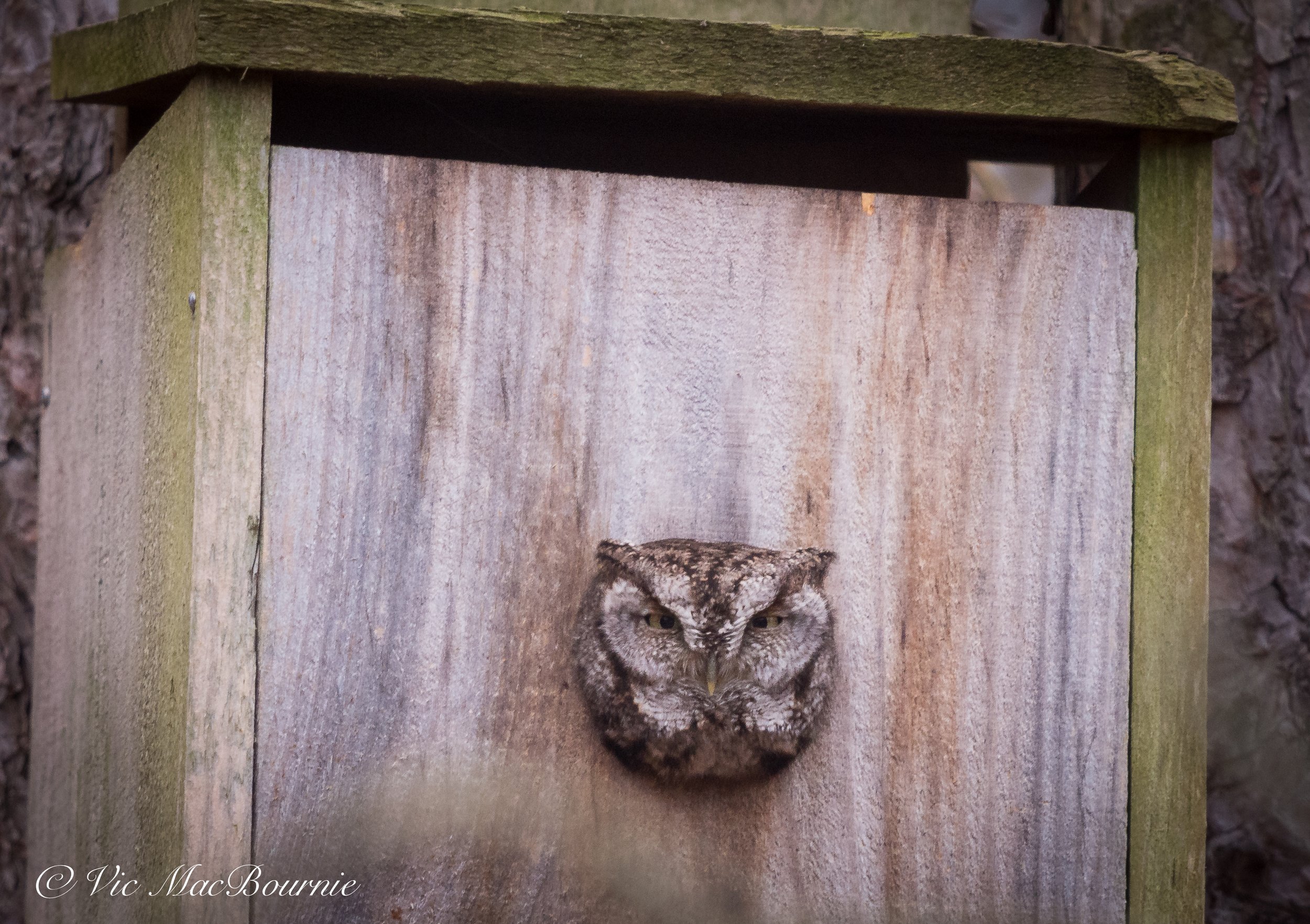

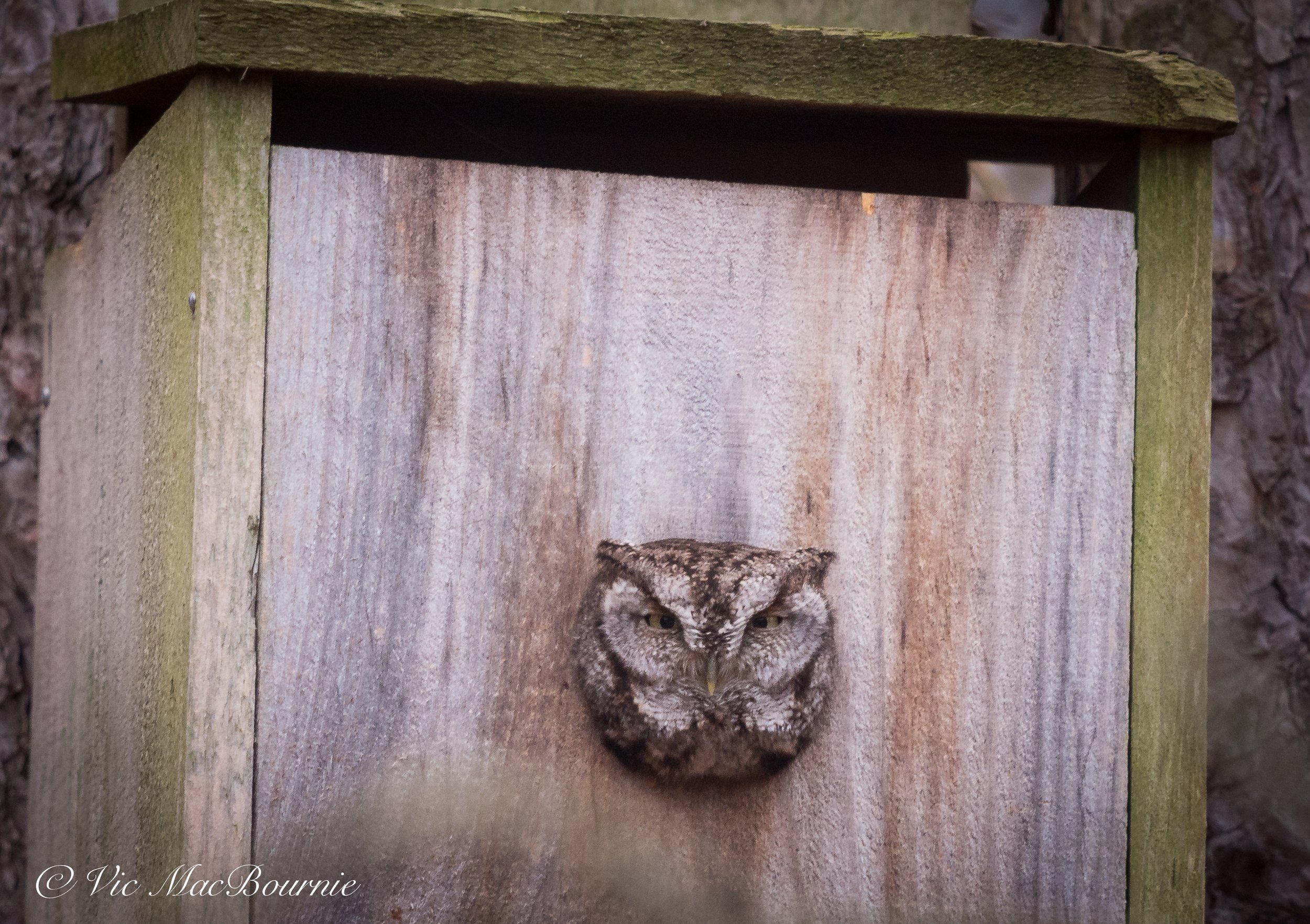
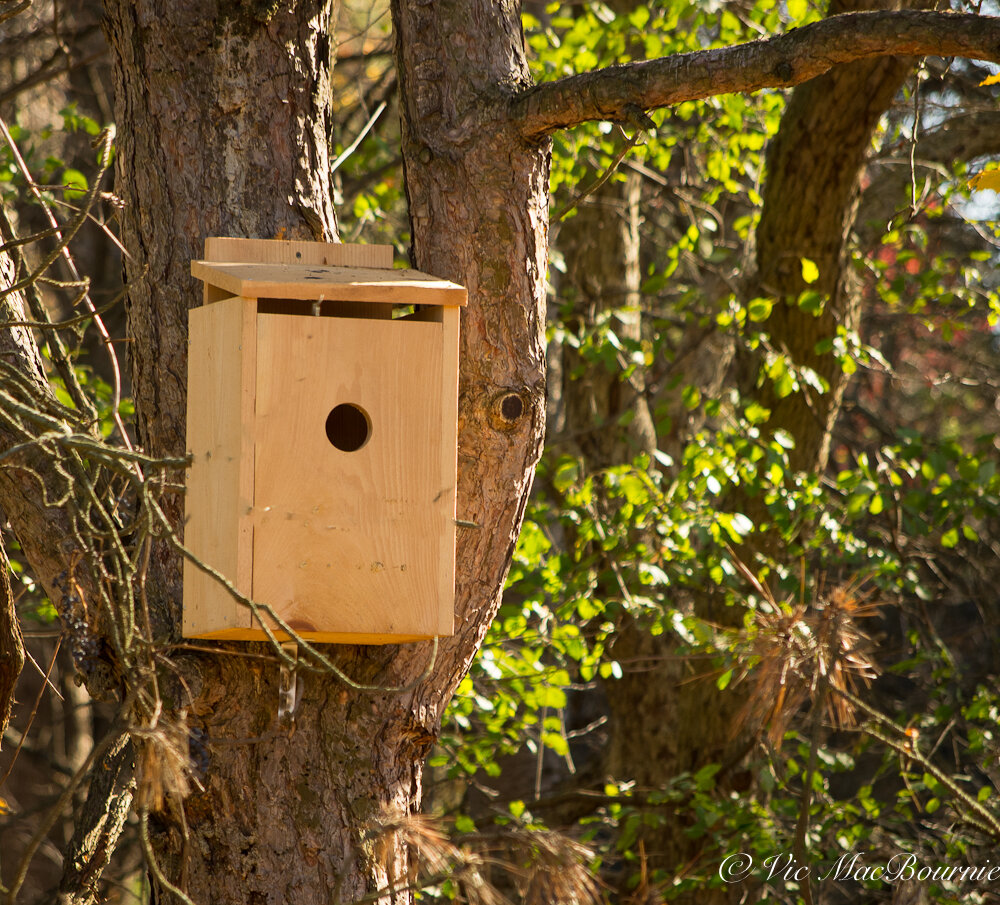

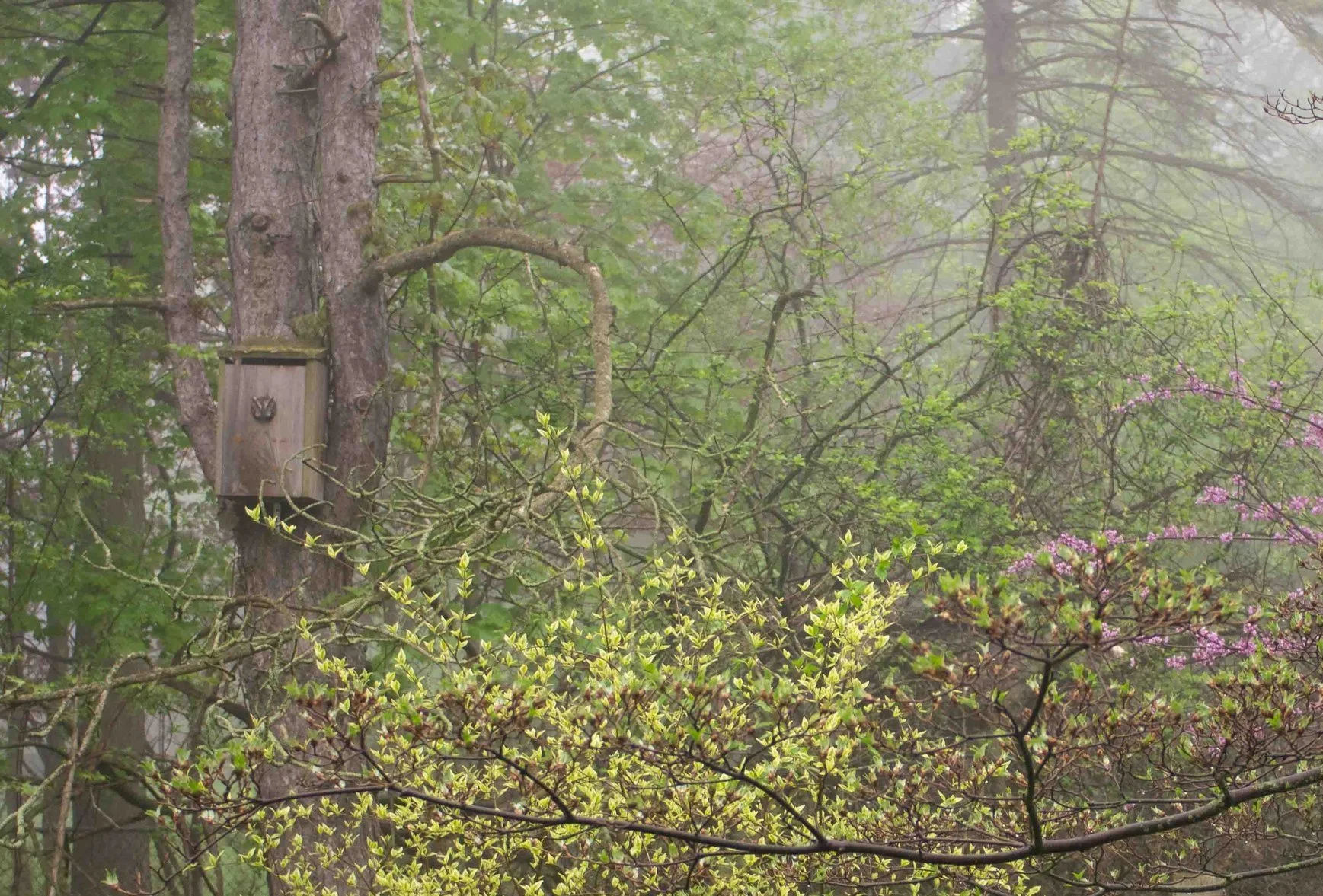




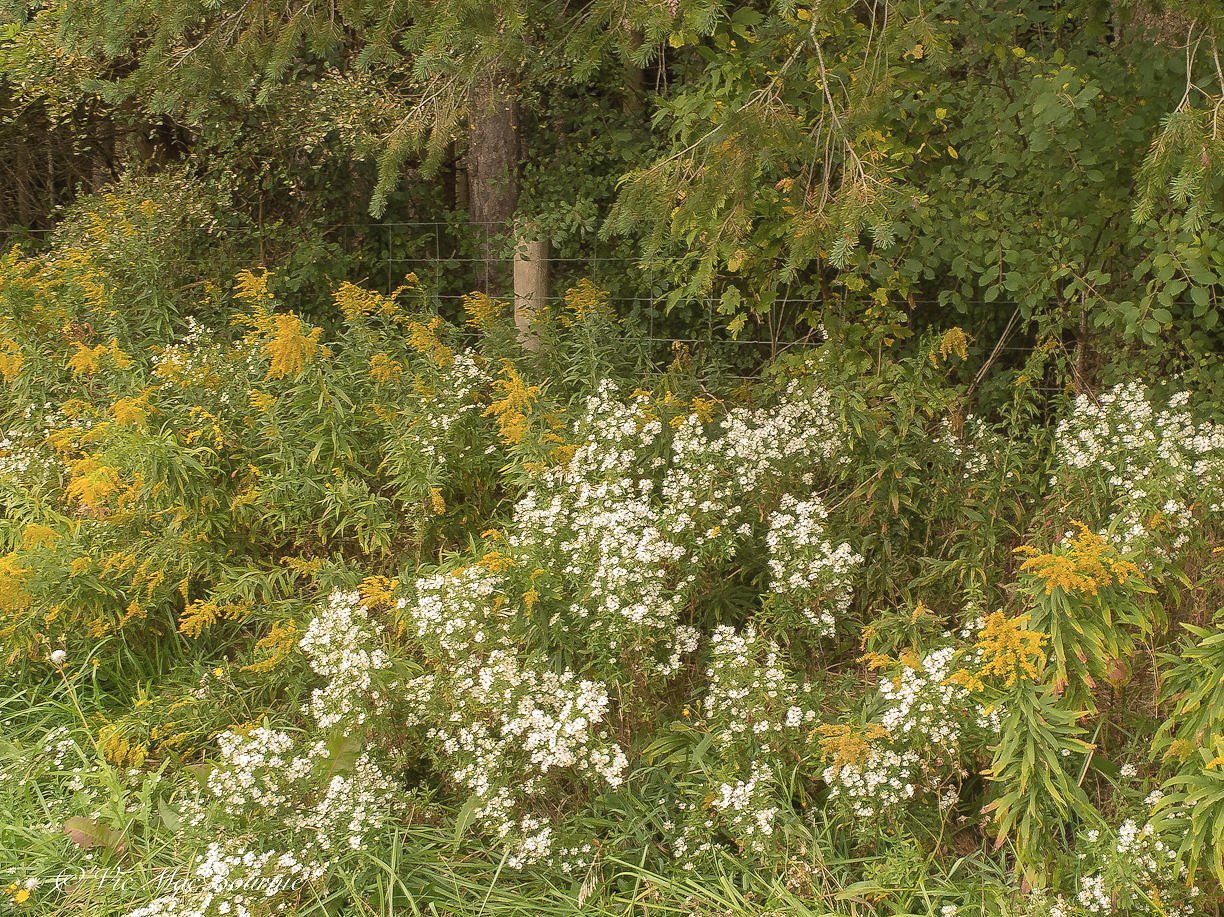

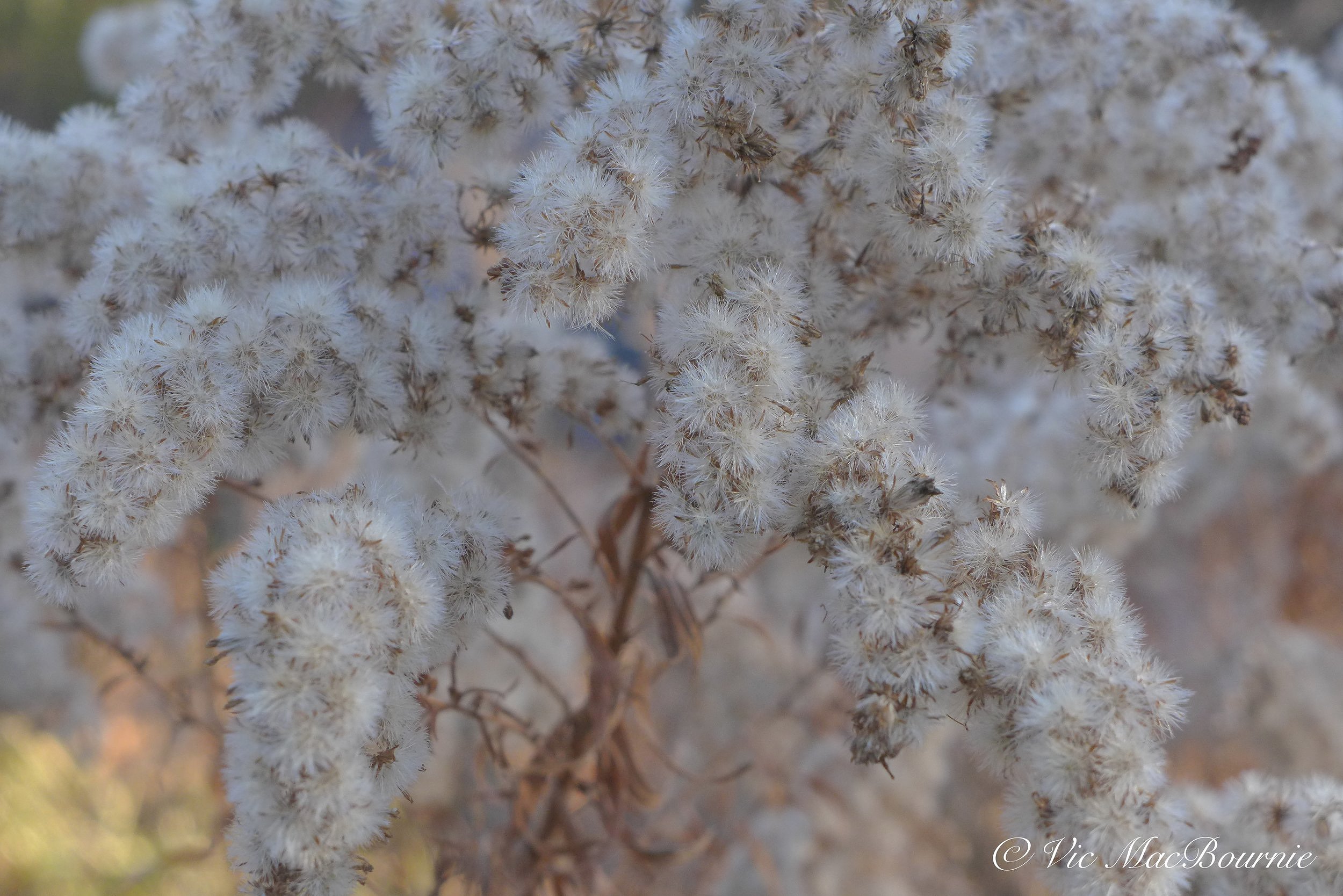




















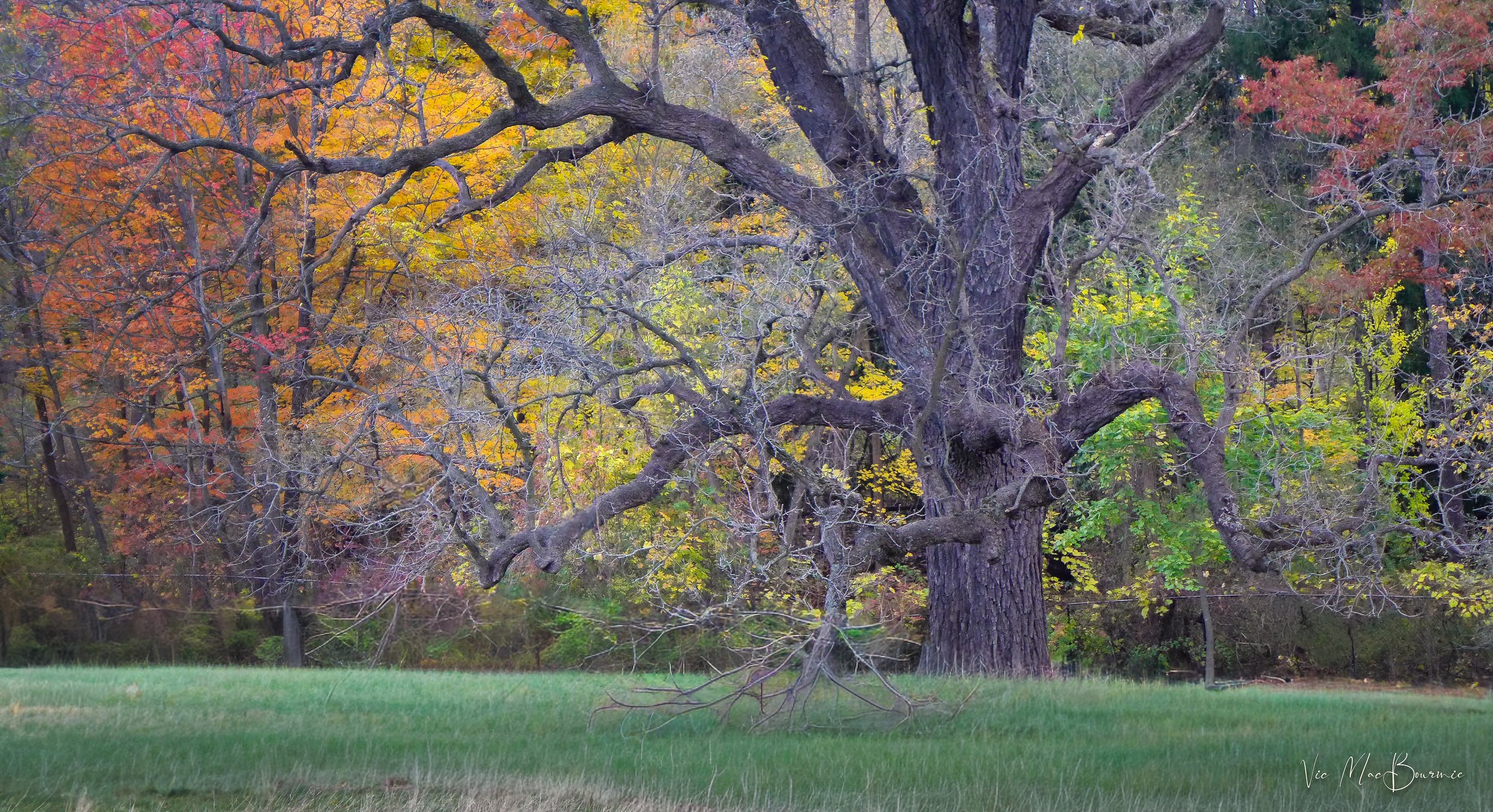






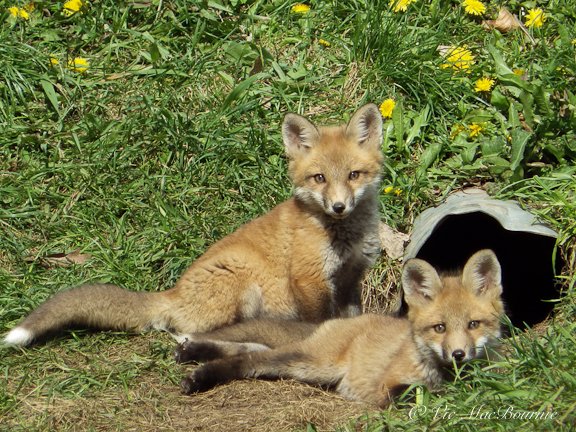


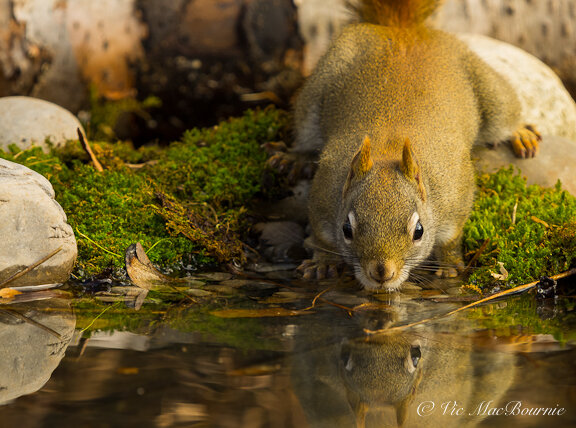
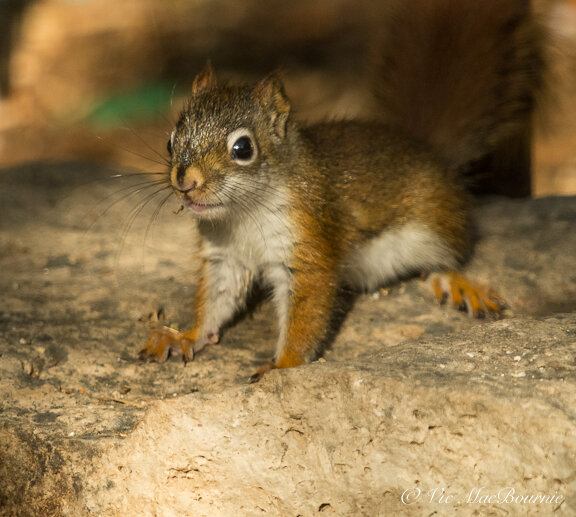

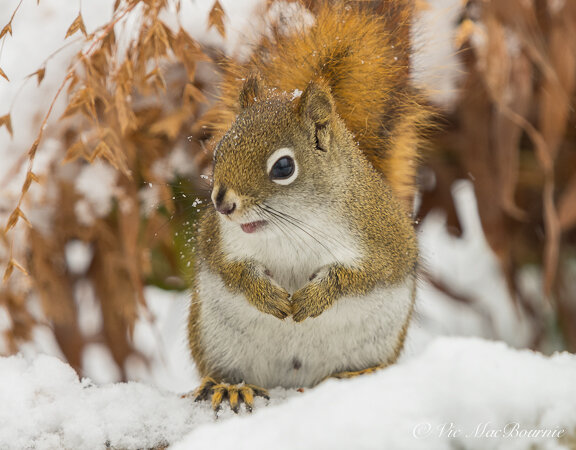

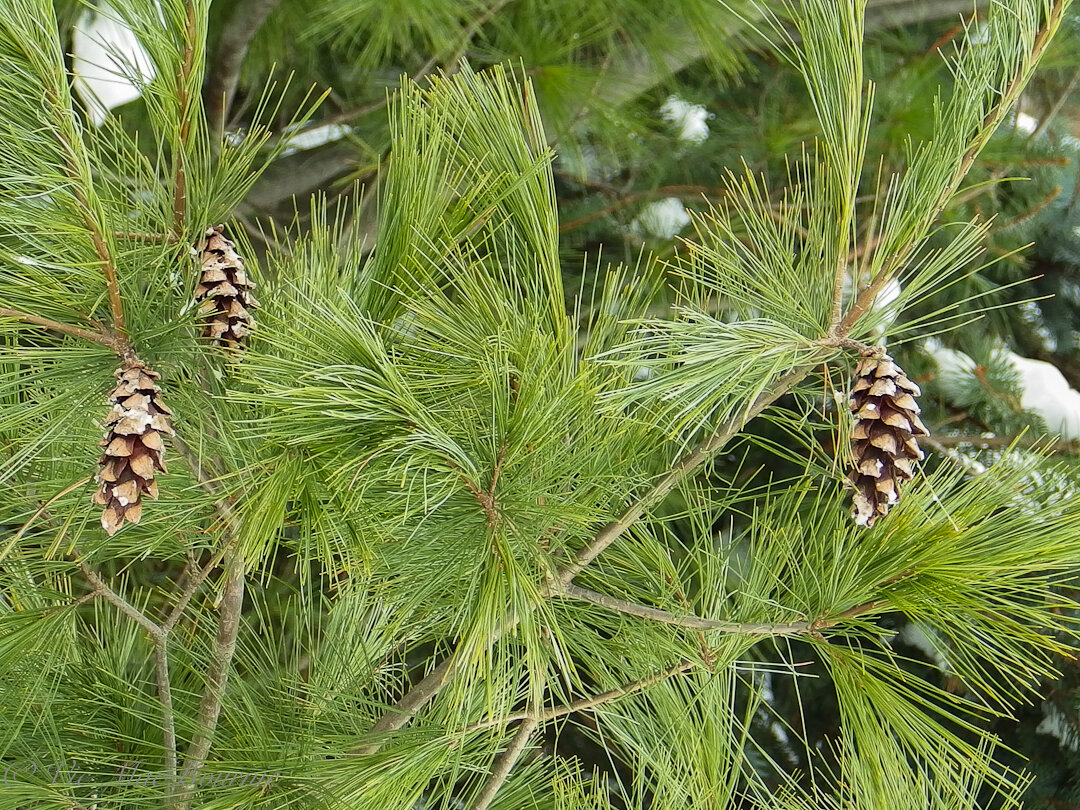
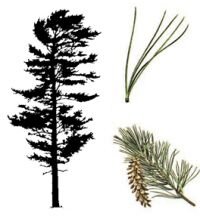

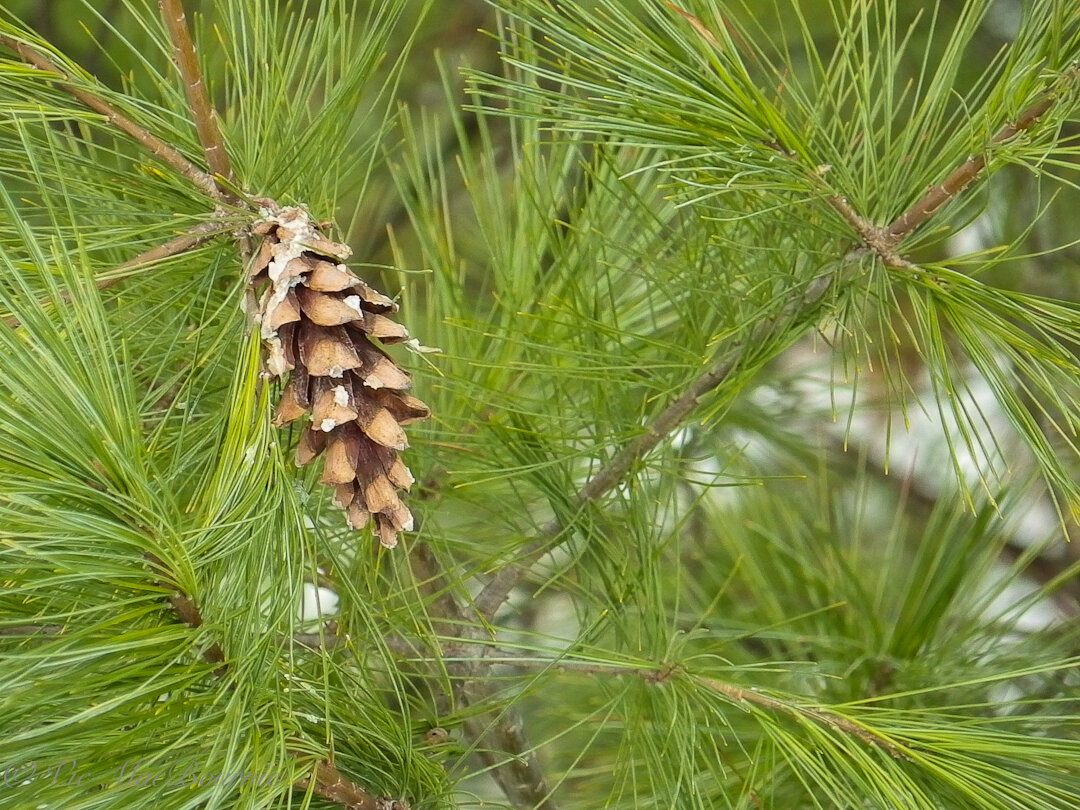
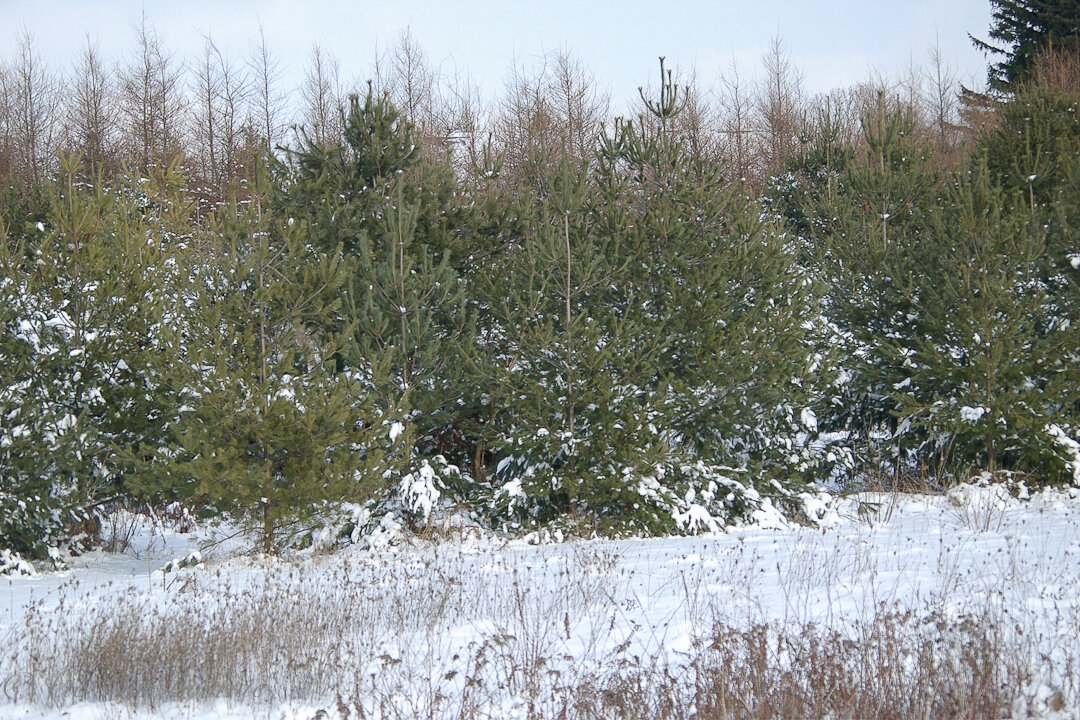

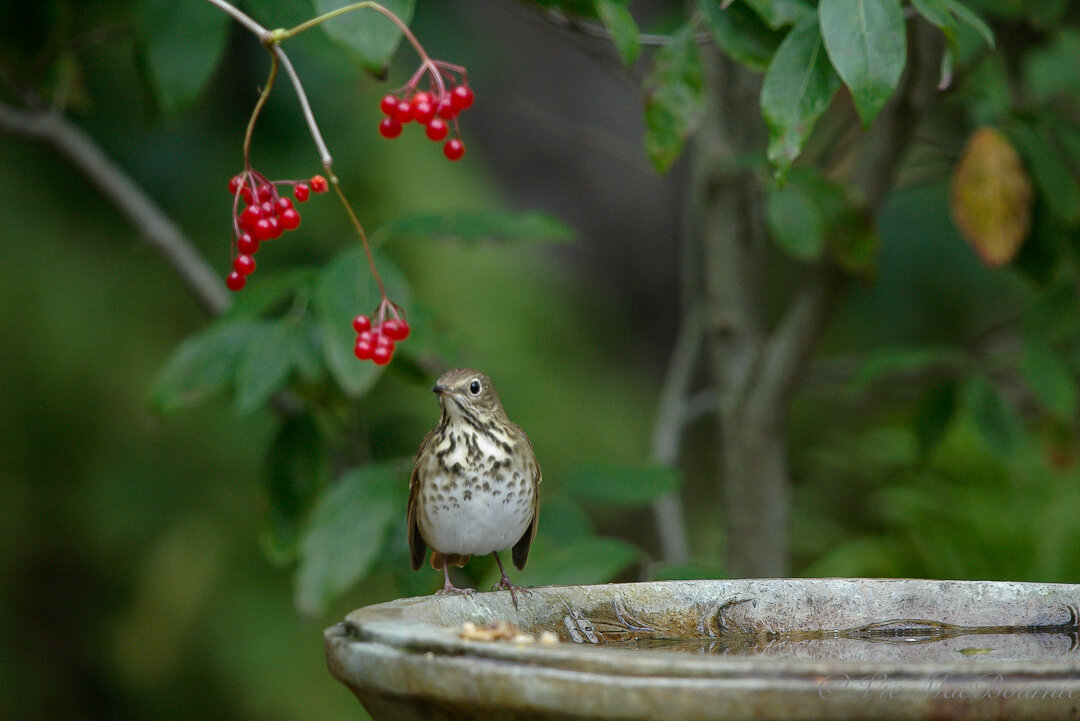
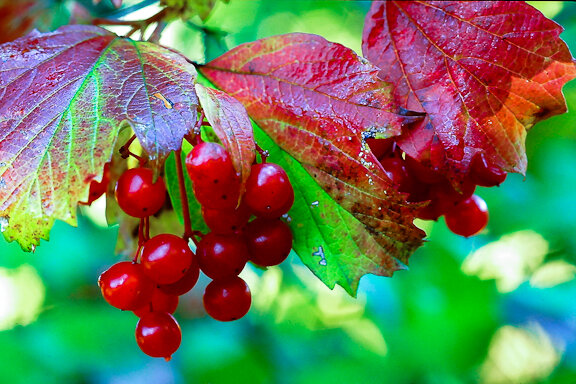



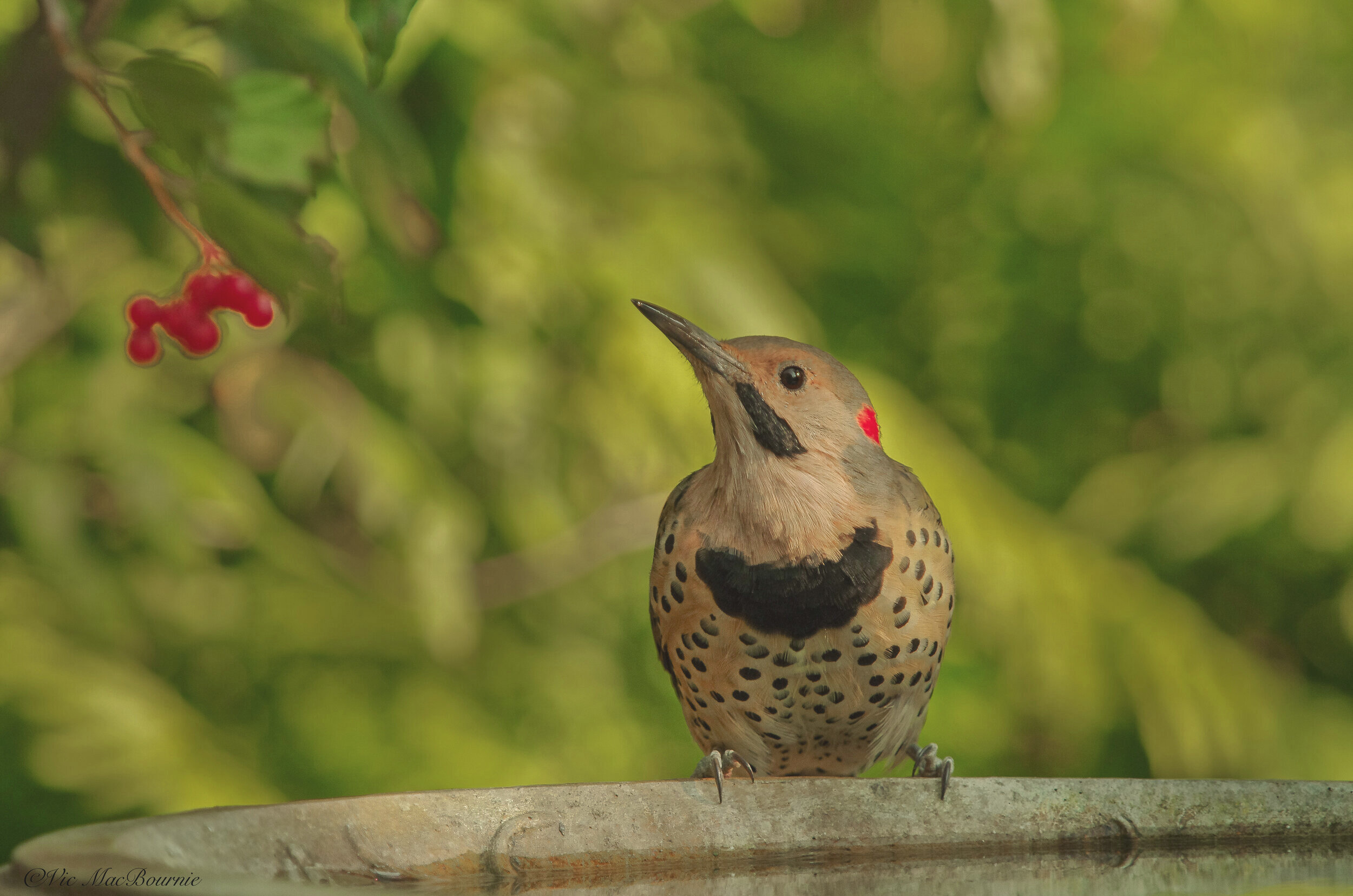
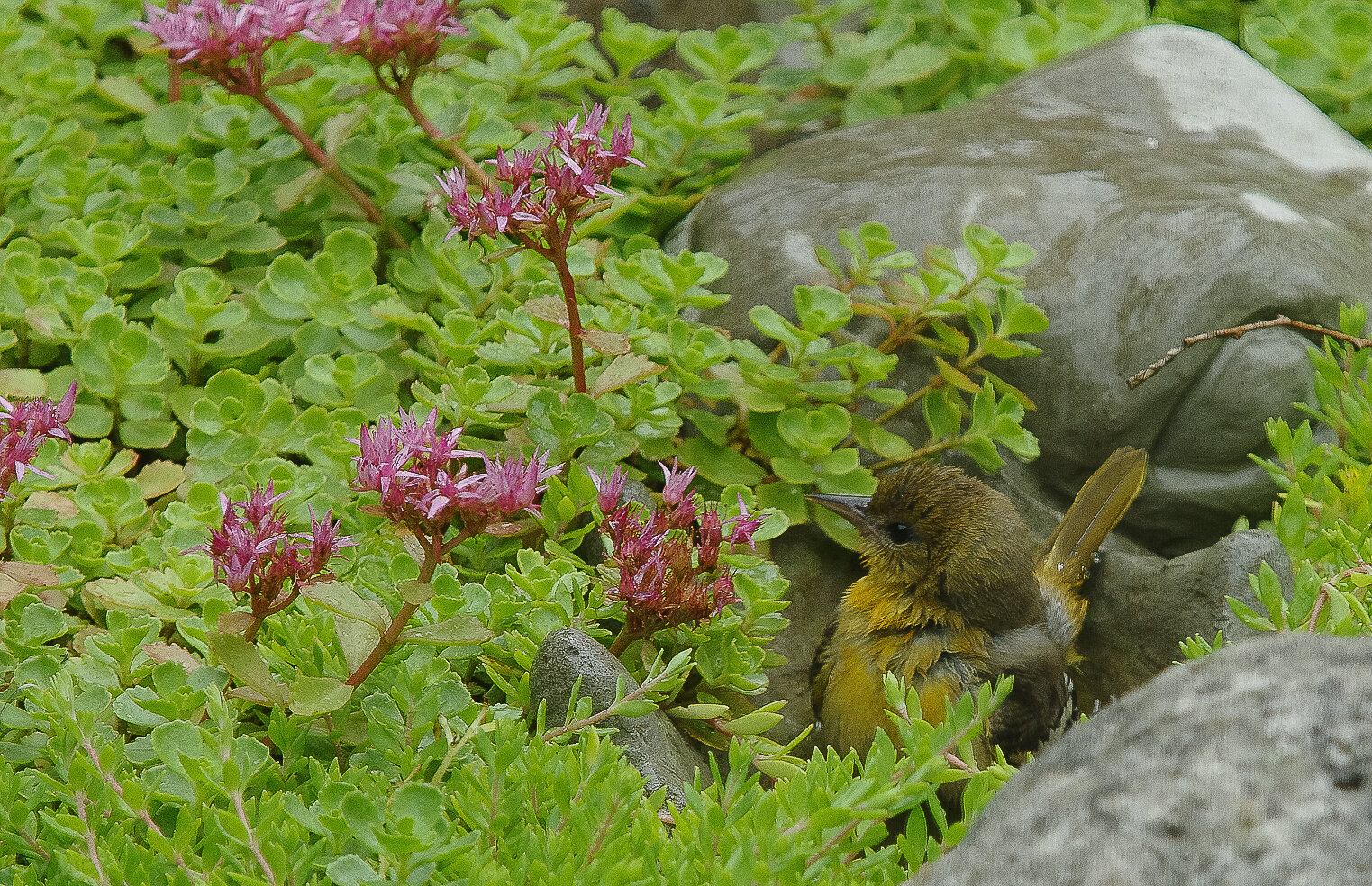
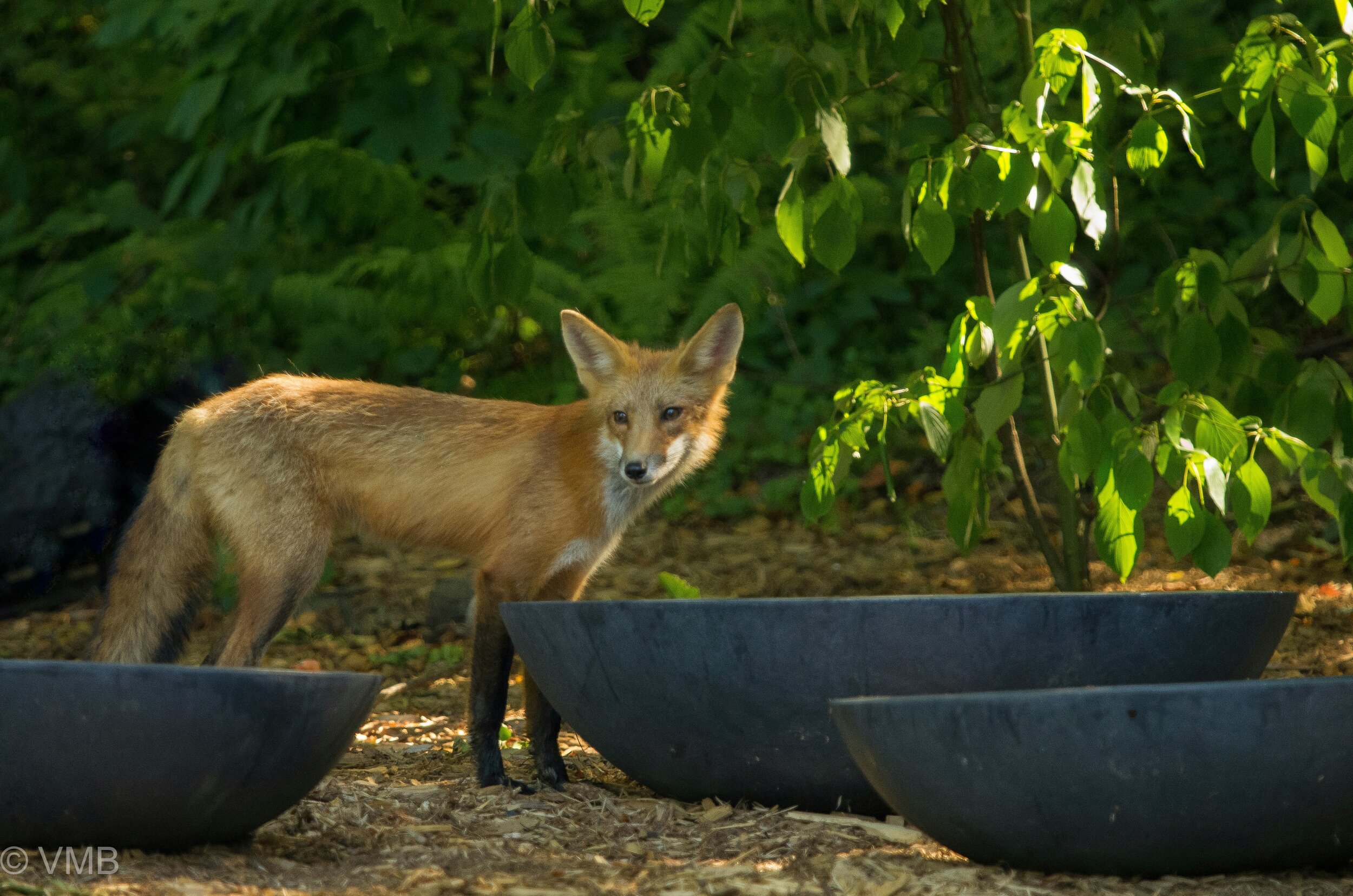
Adding a creative touch with Luminar Neo and Lensbaby lenses.